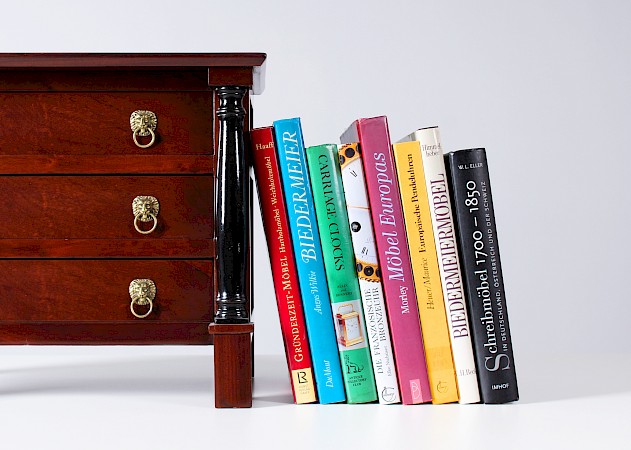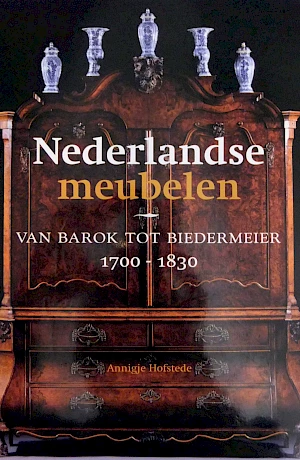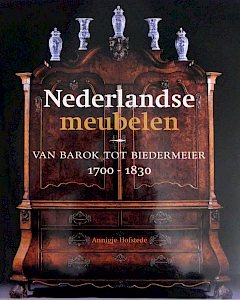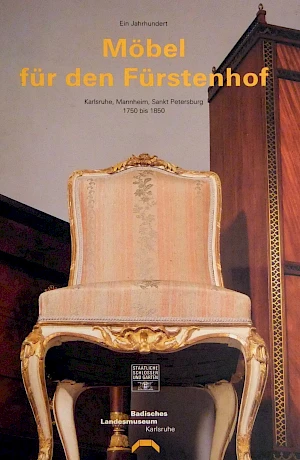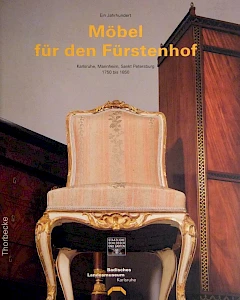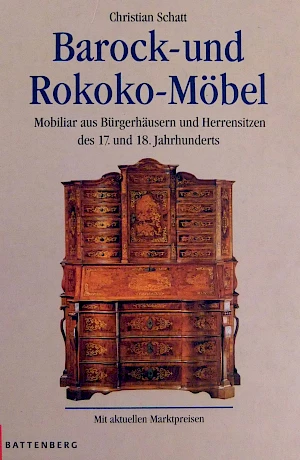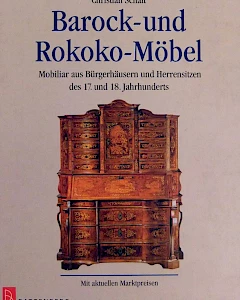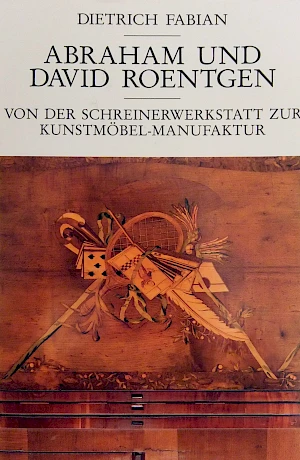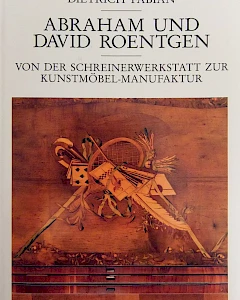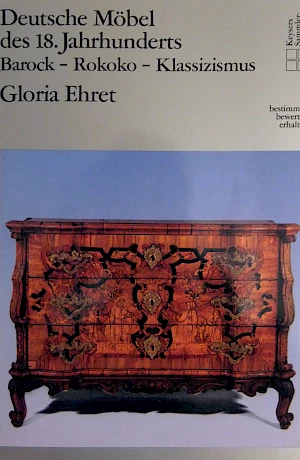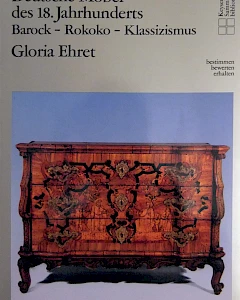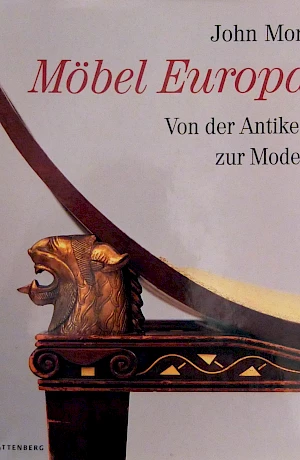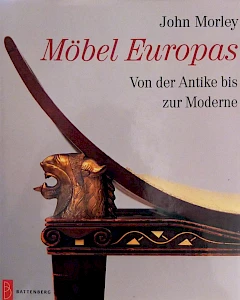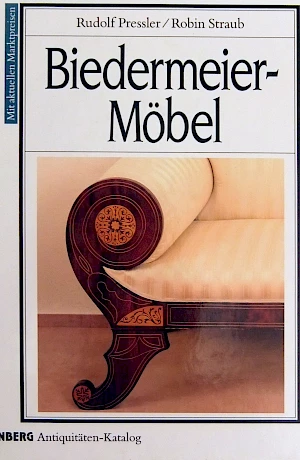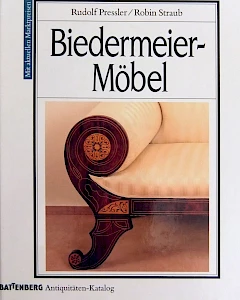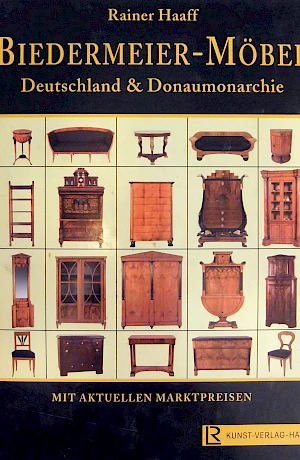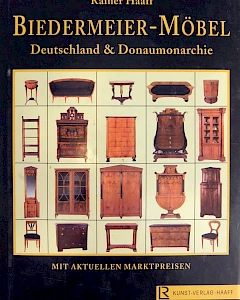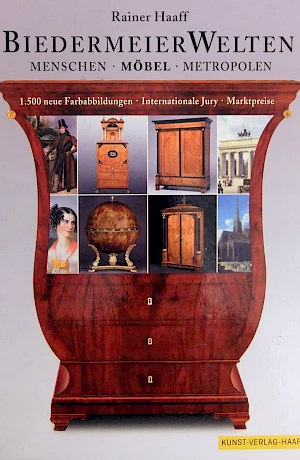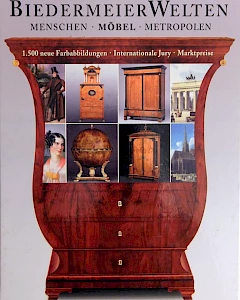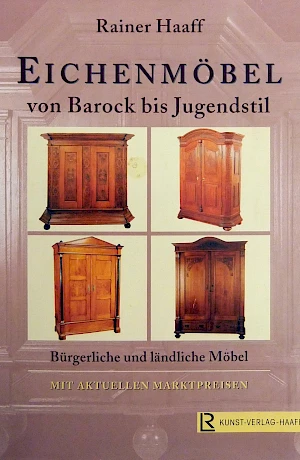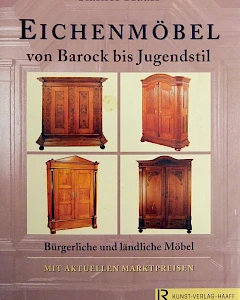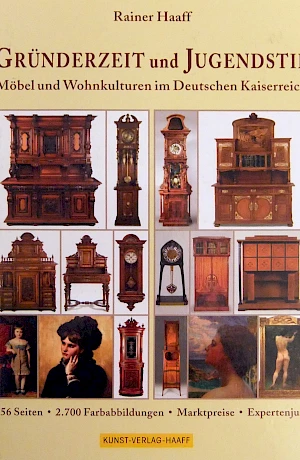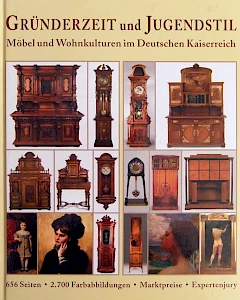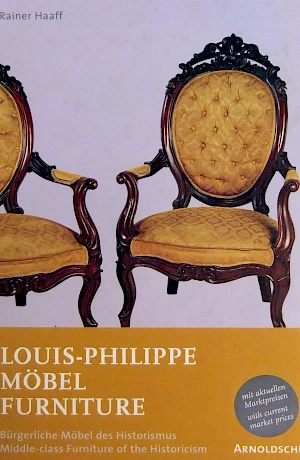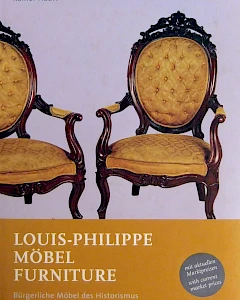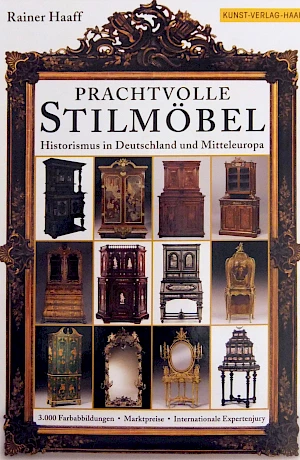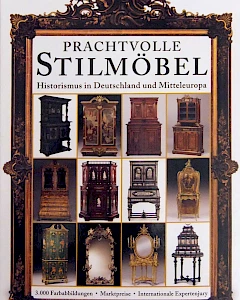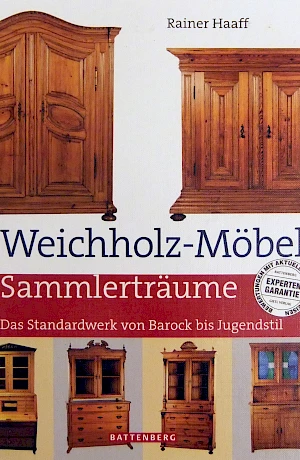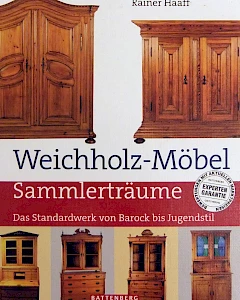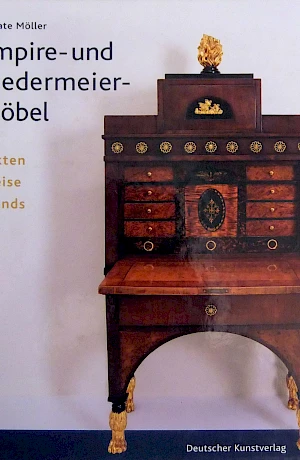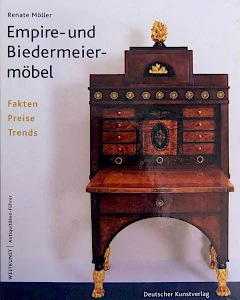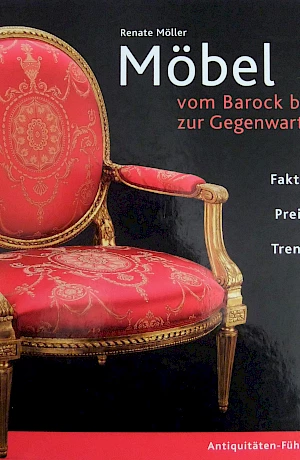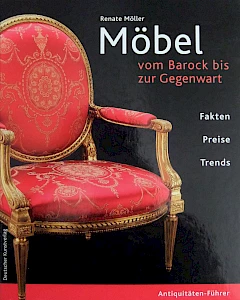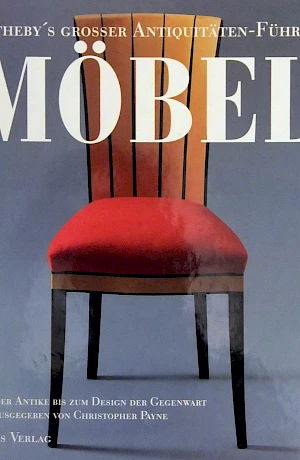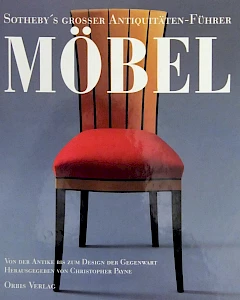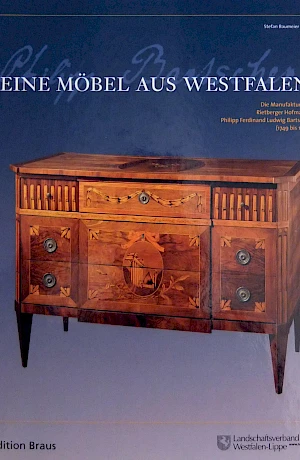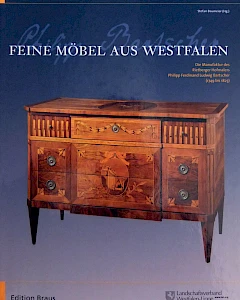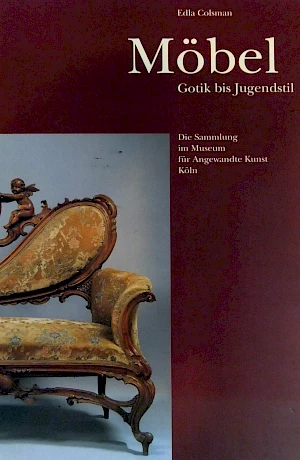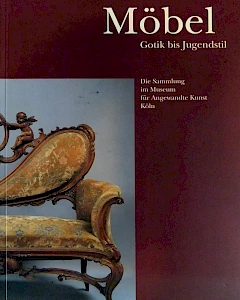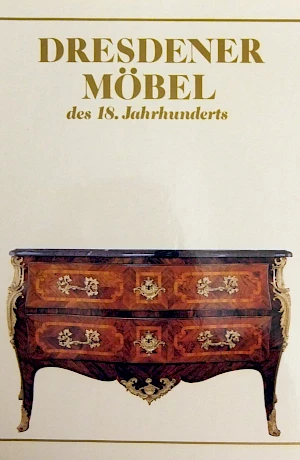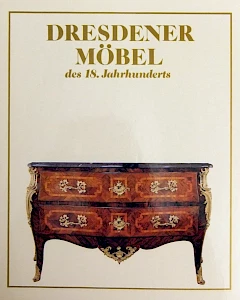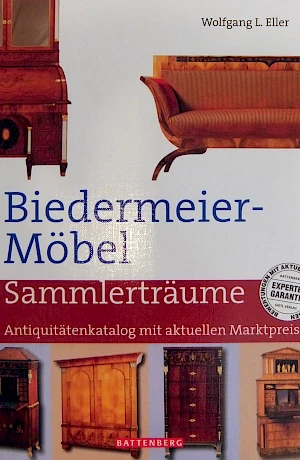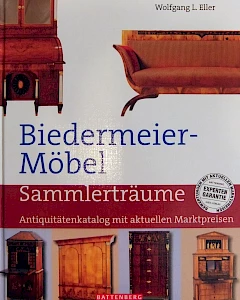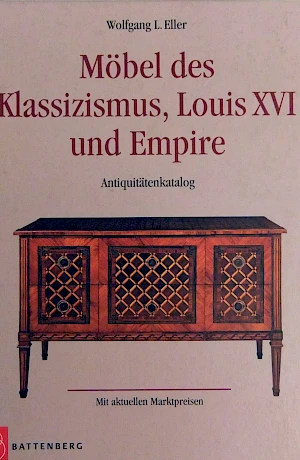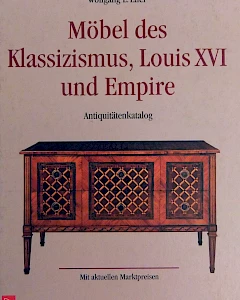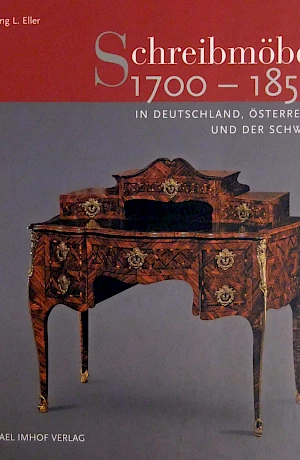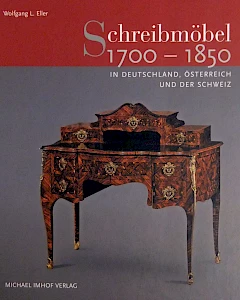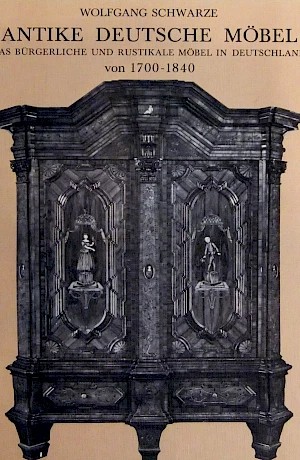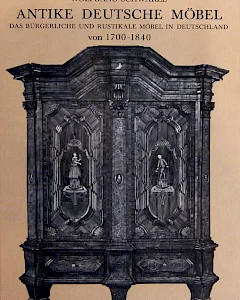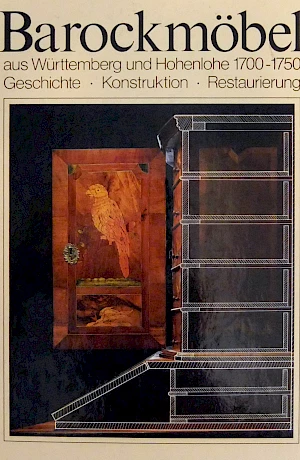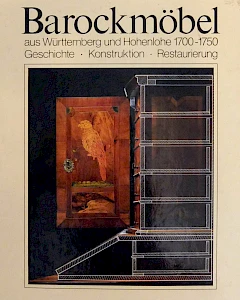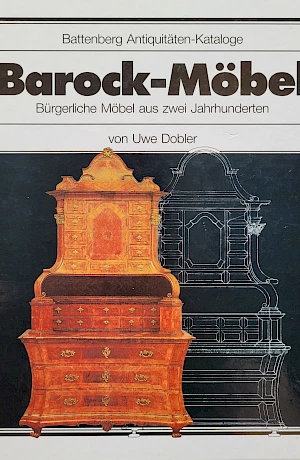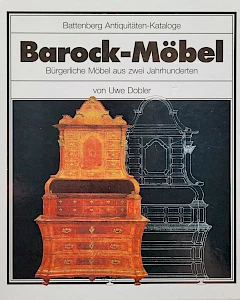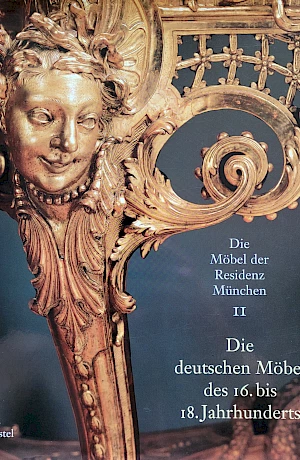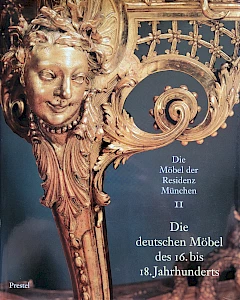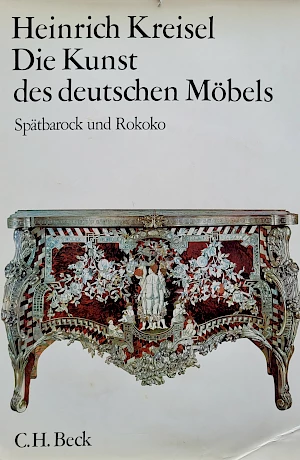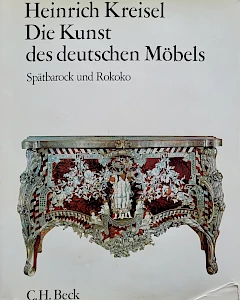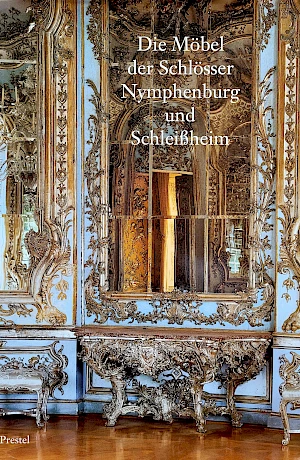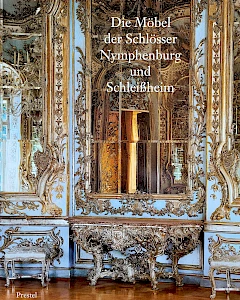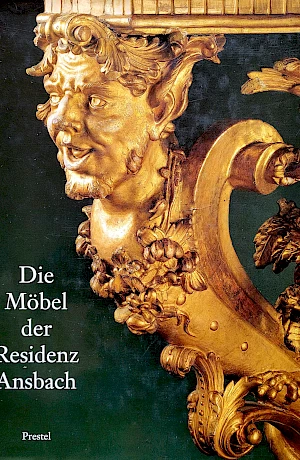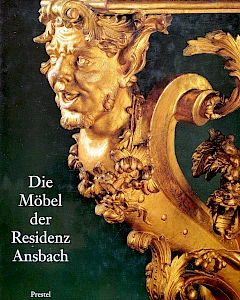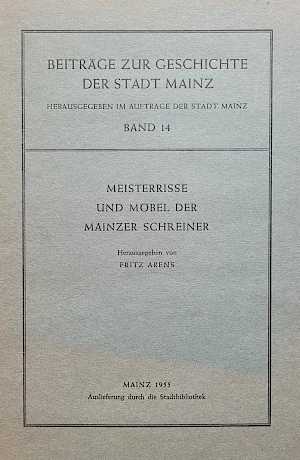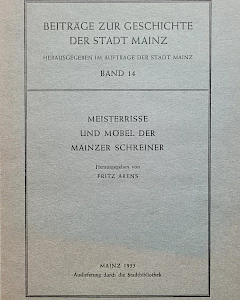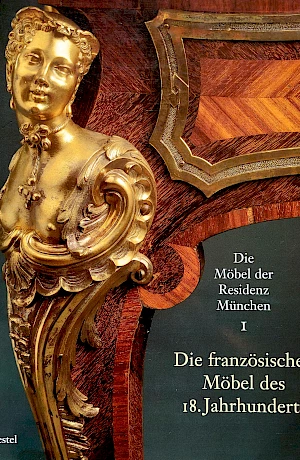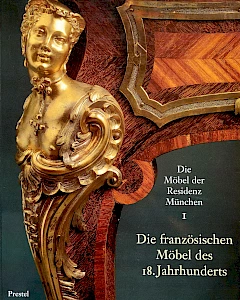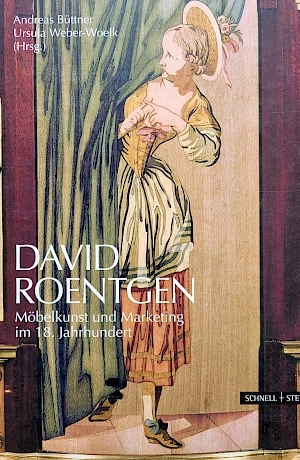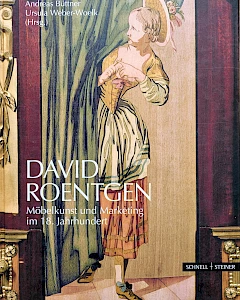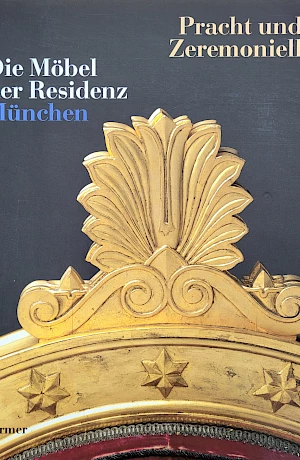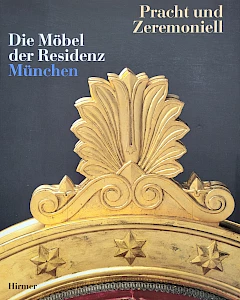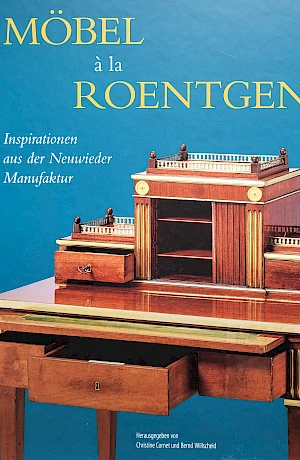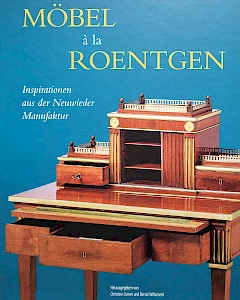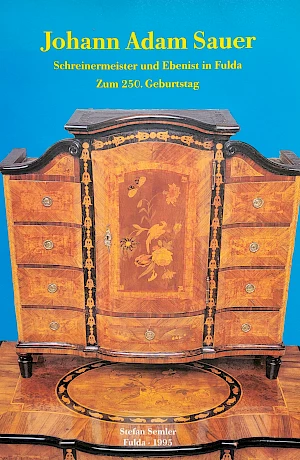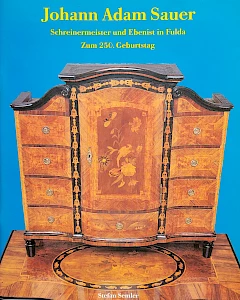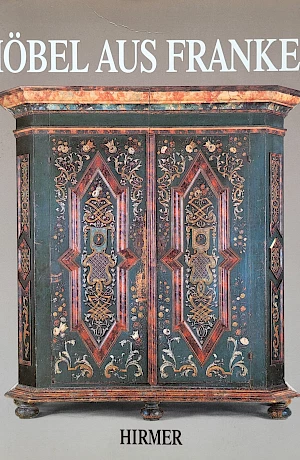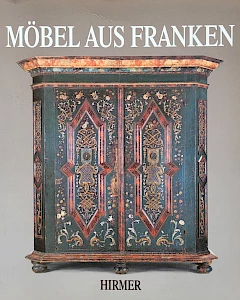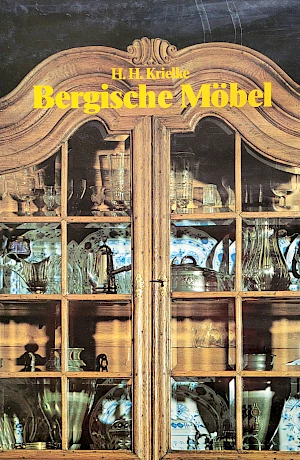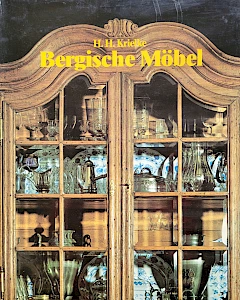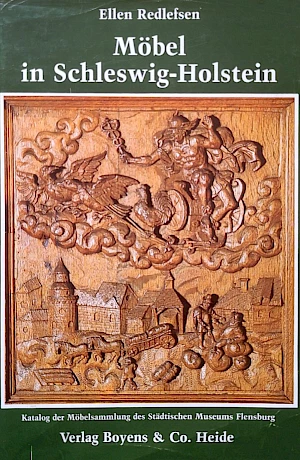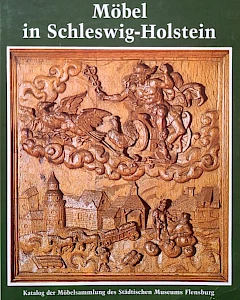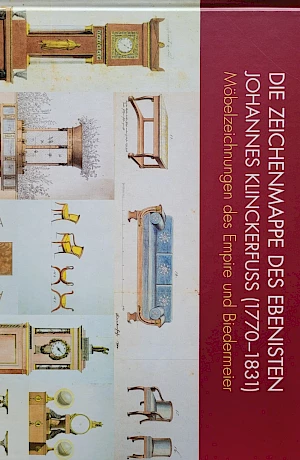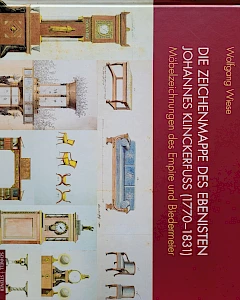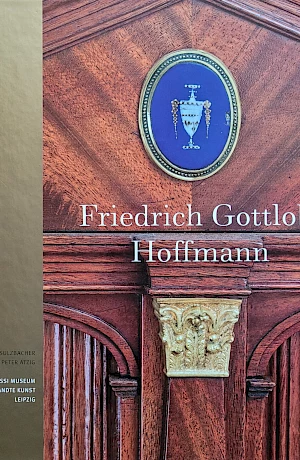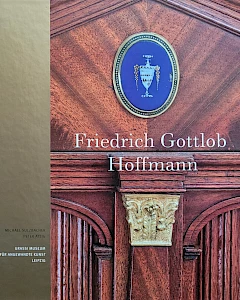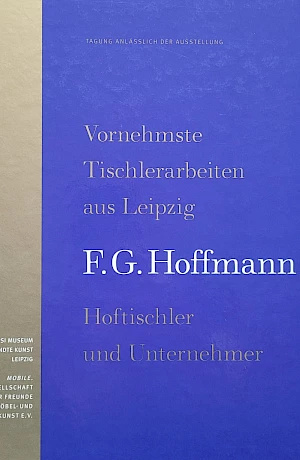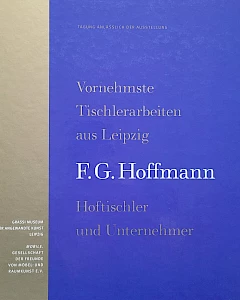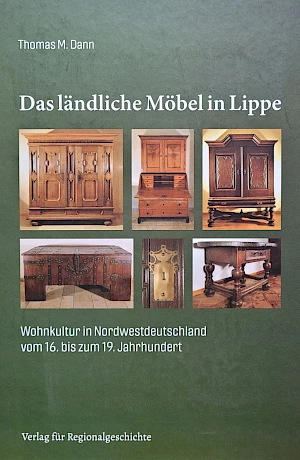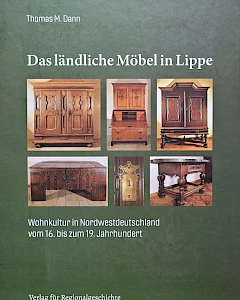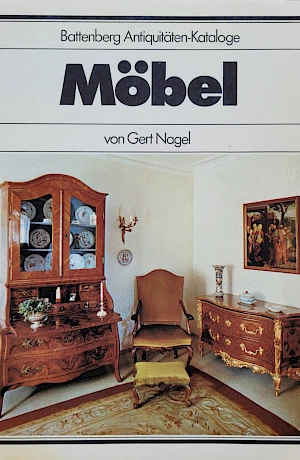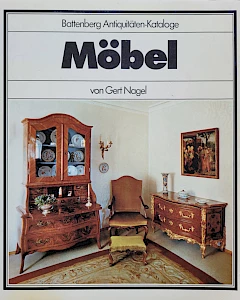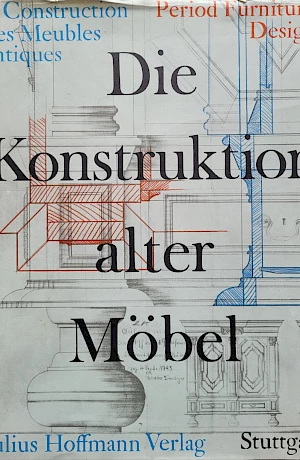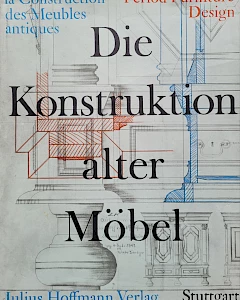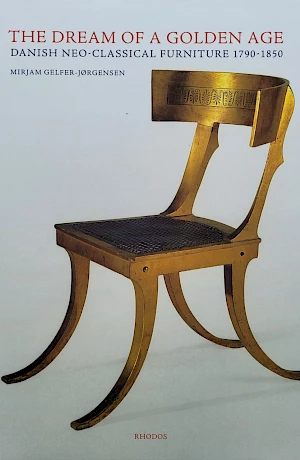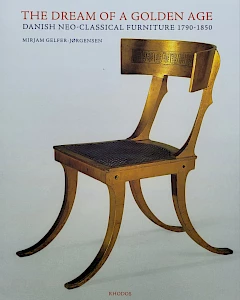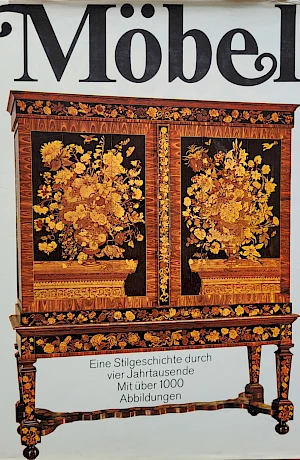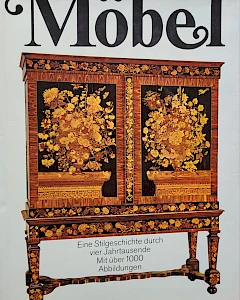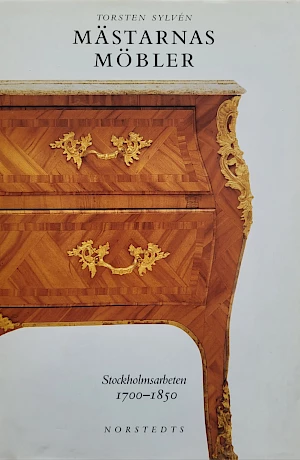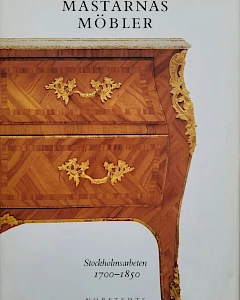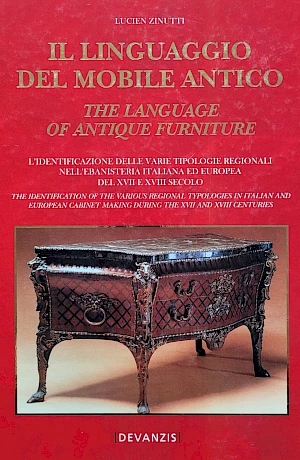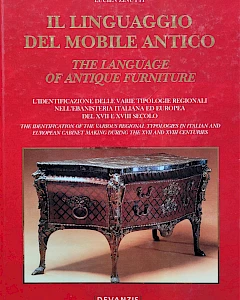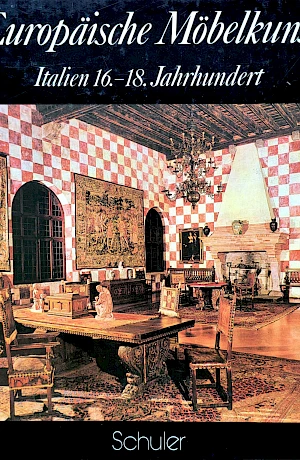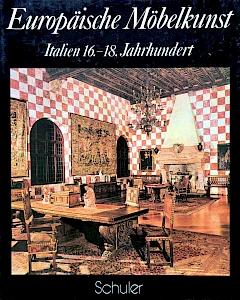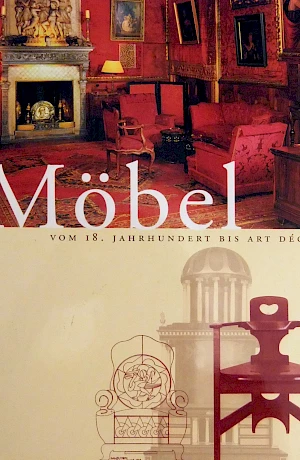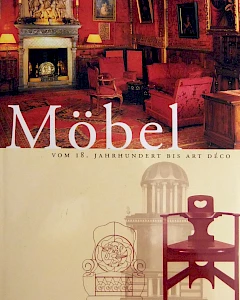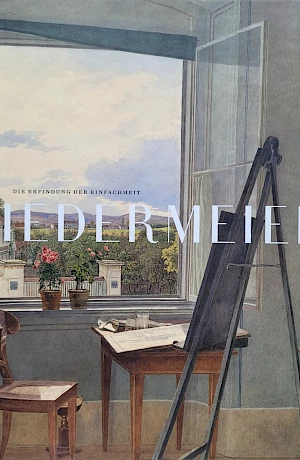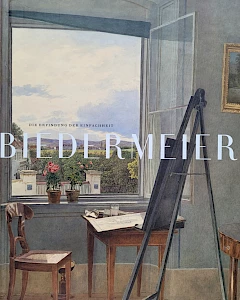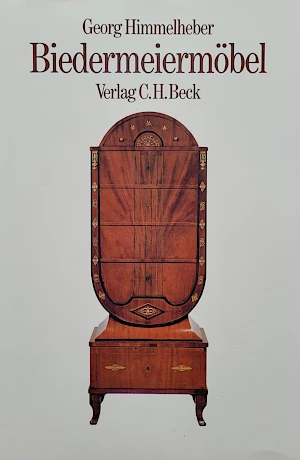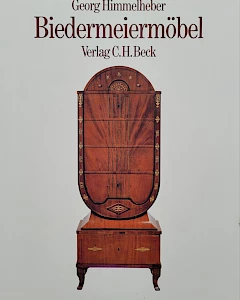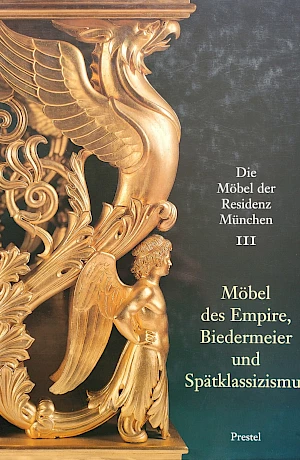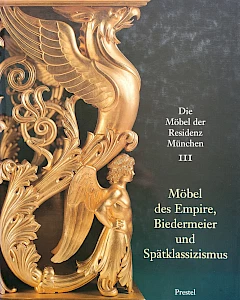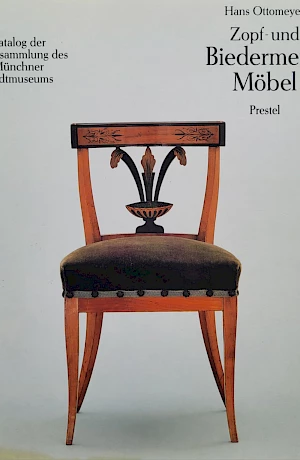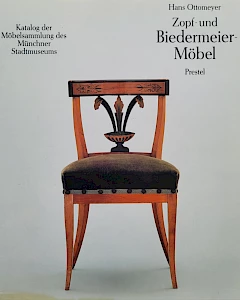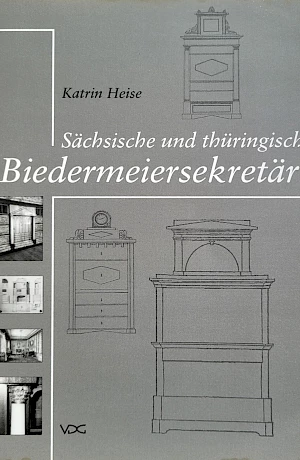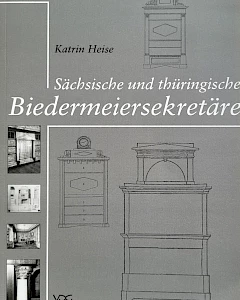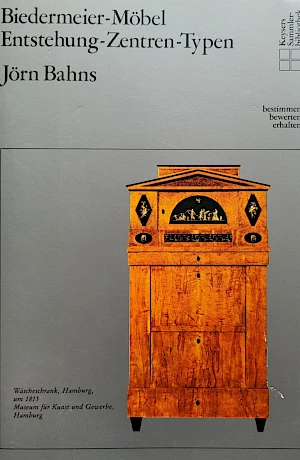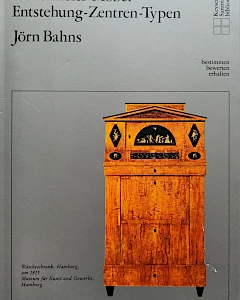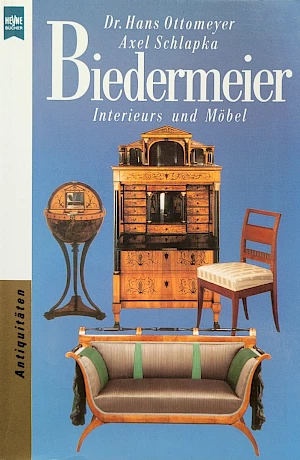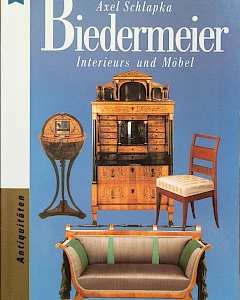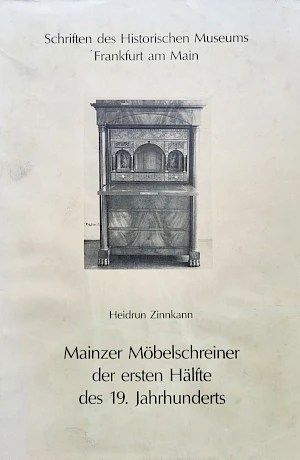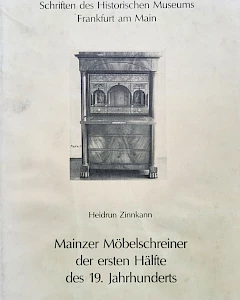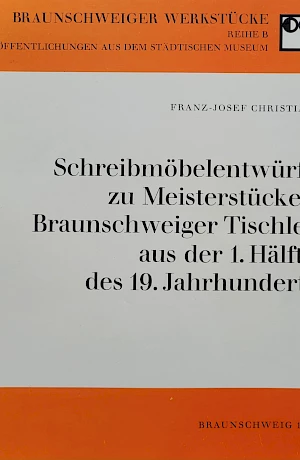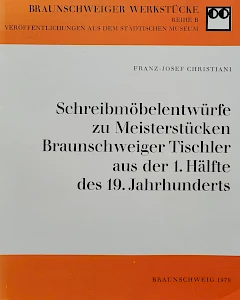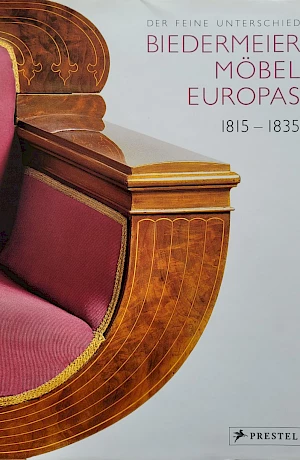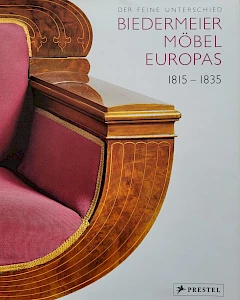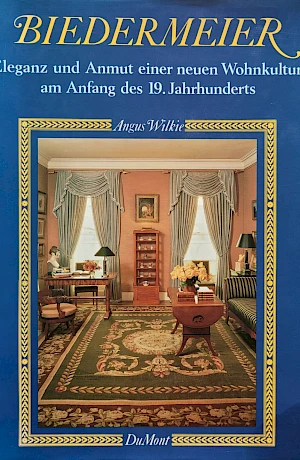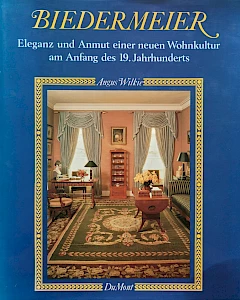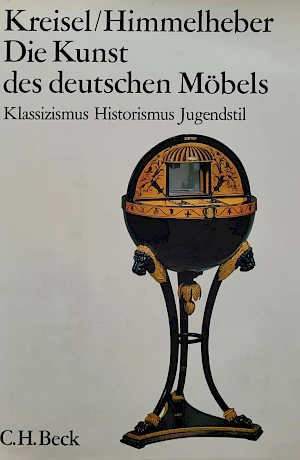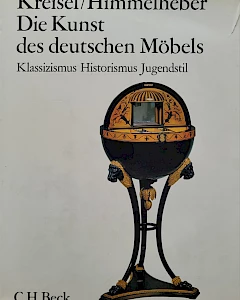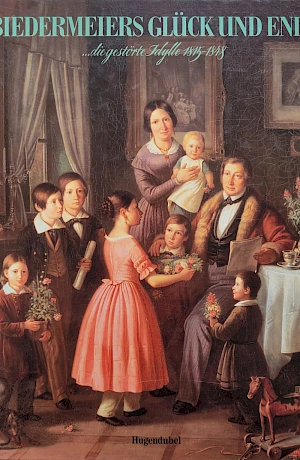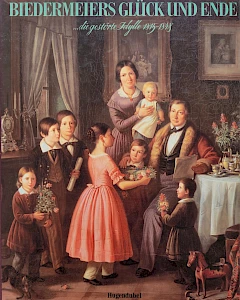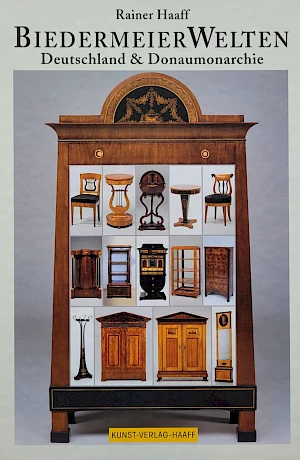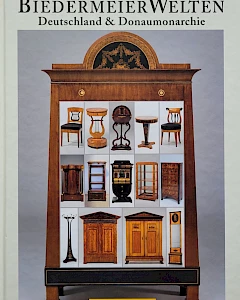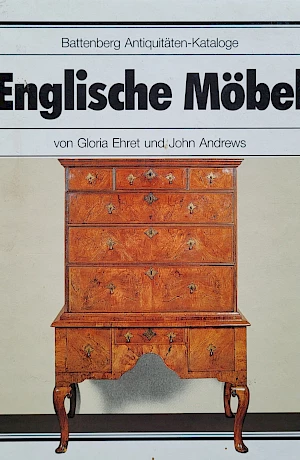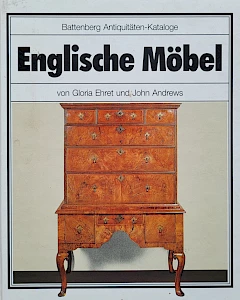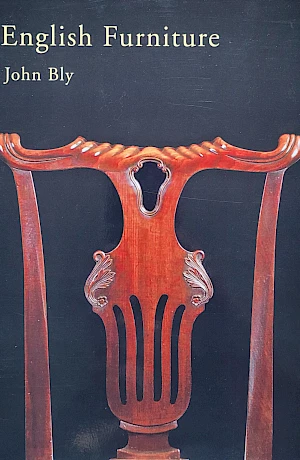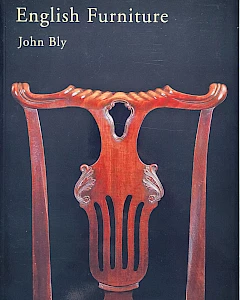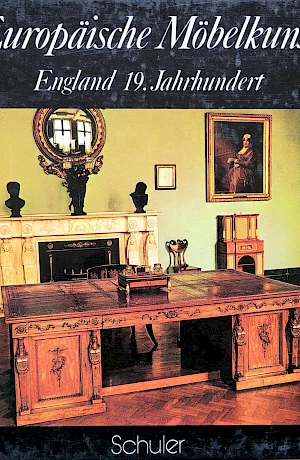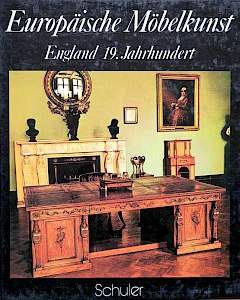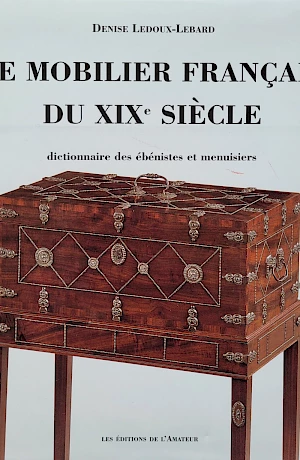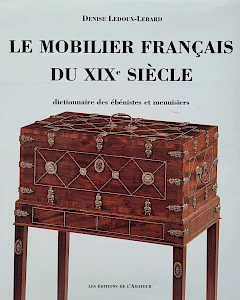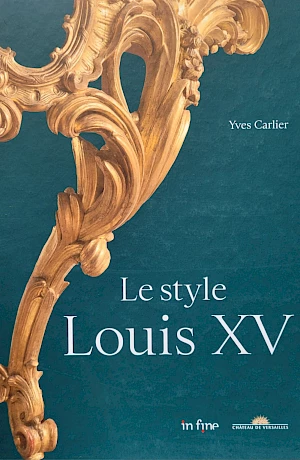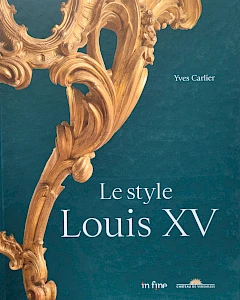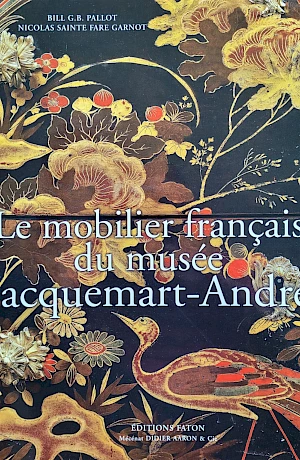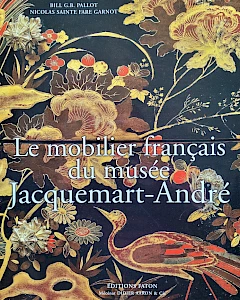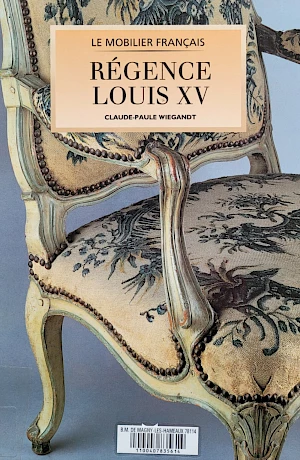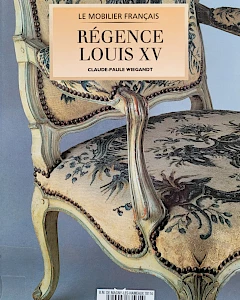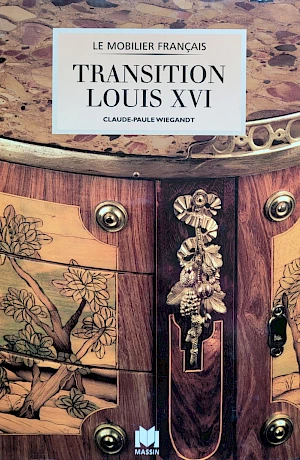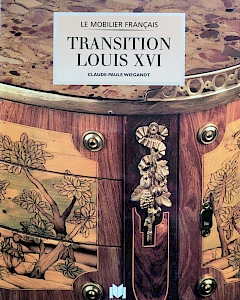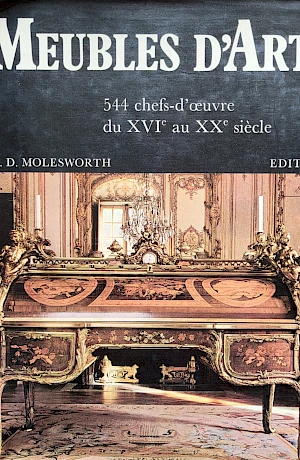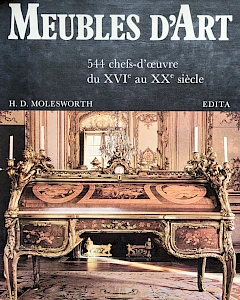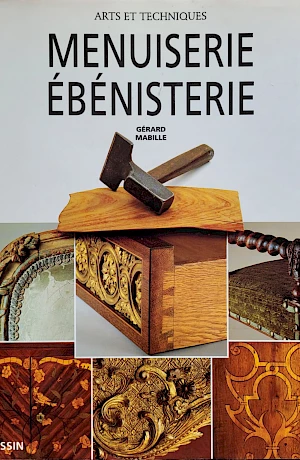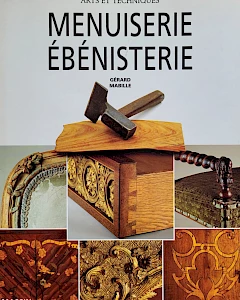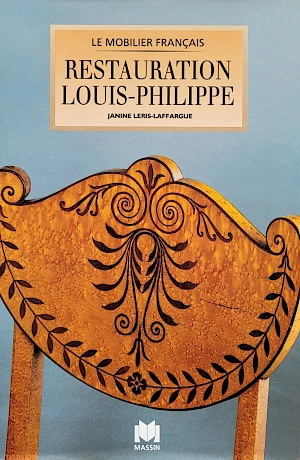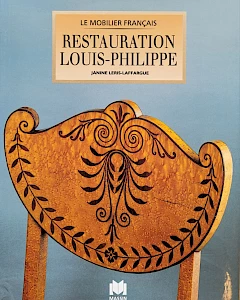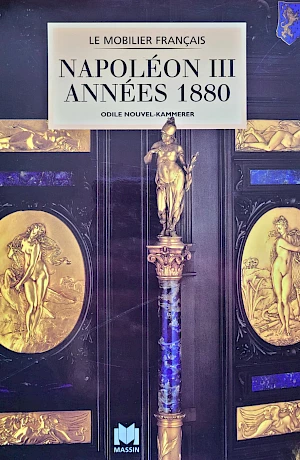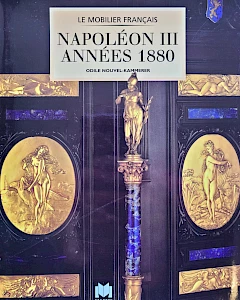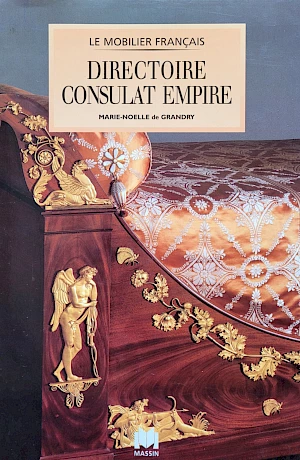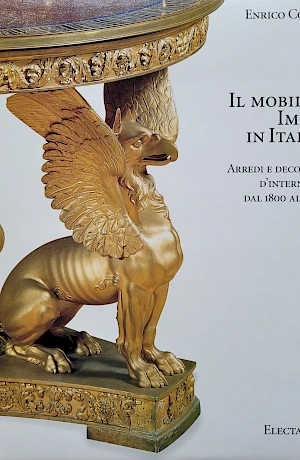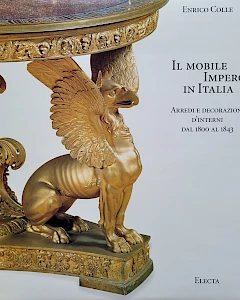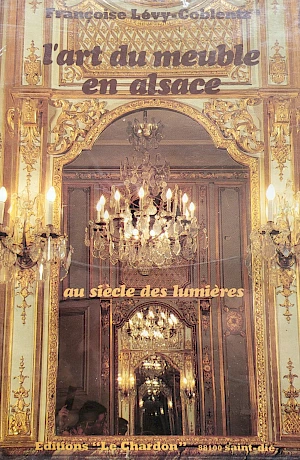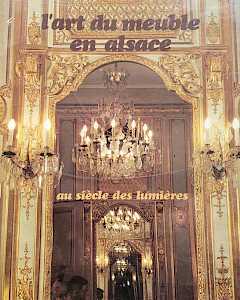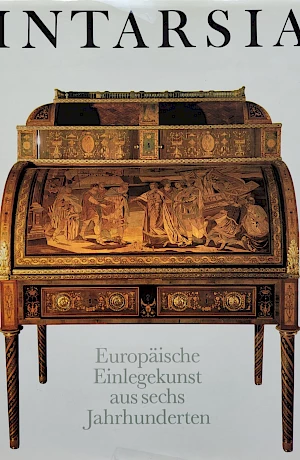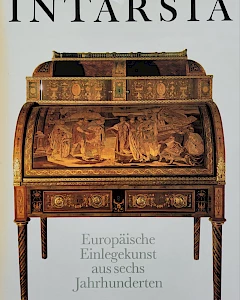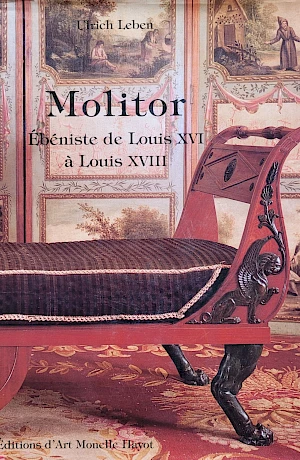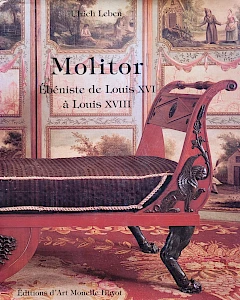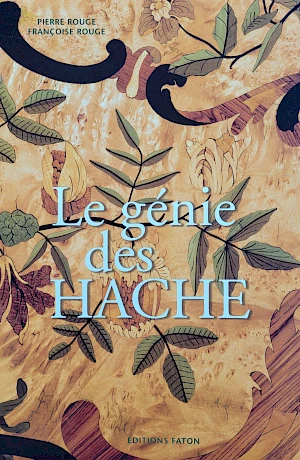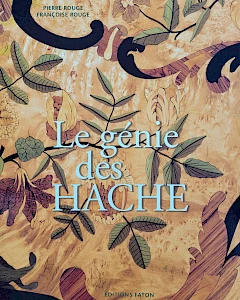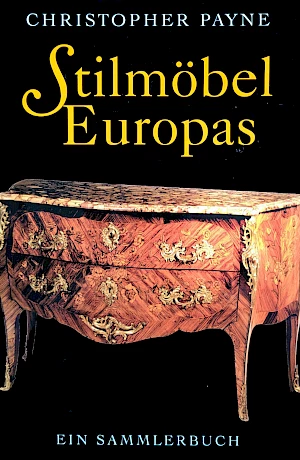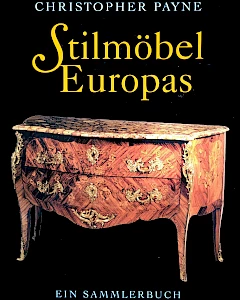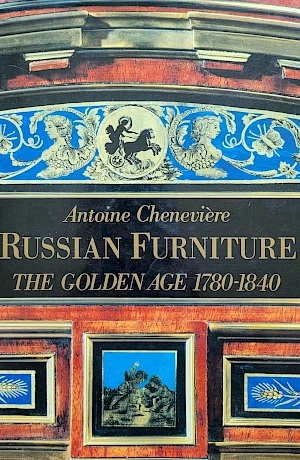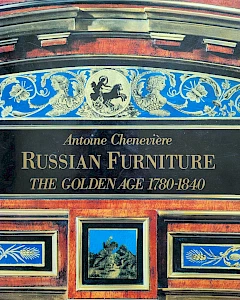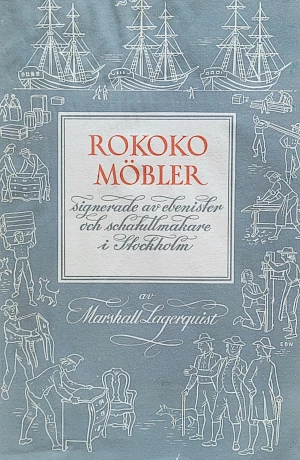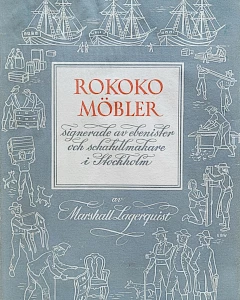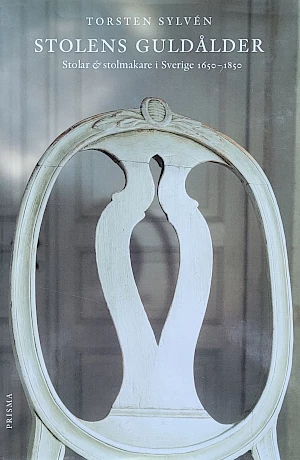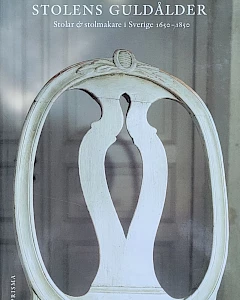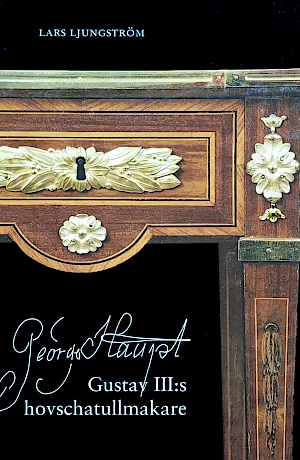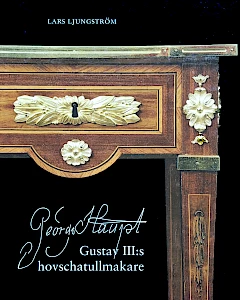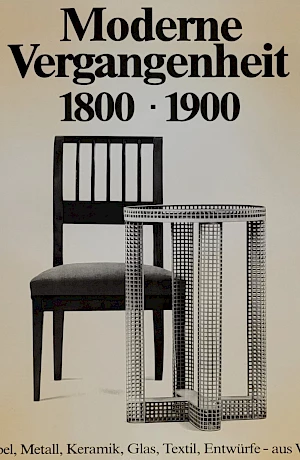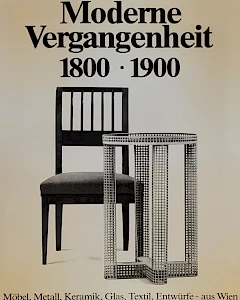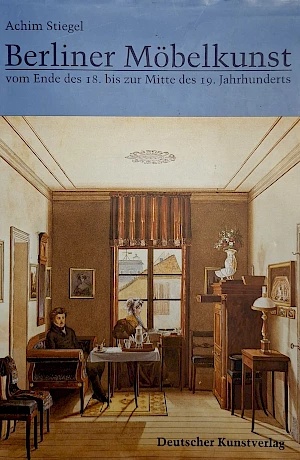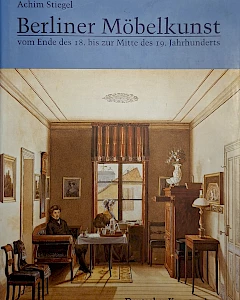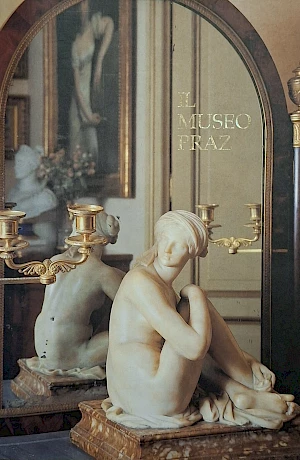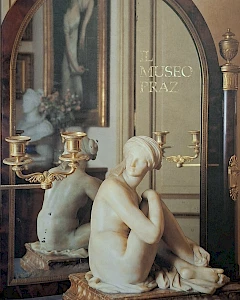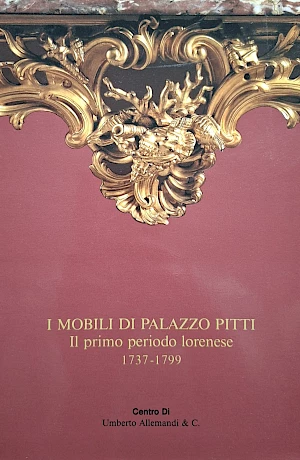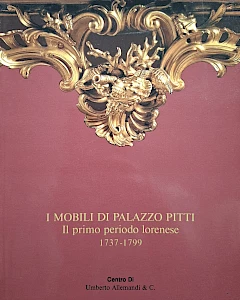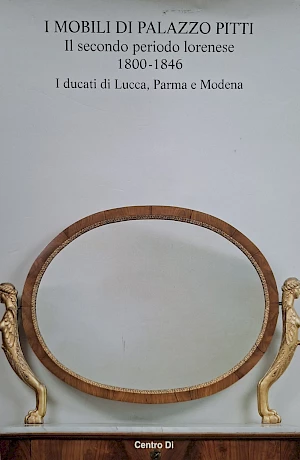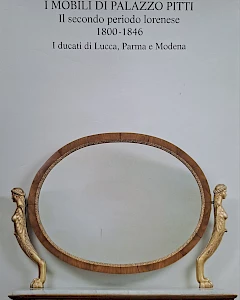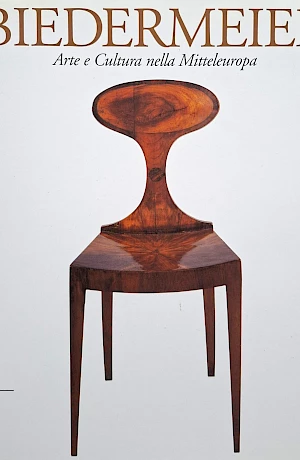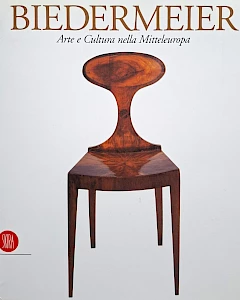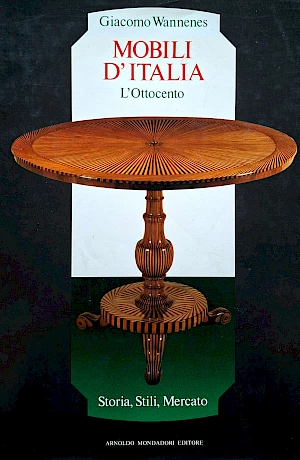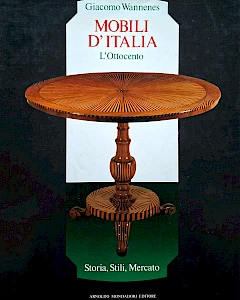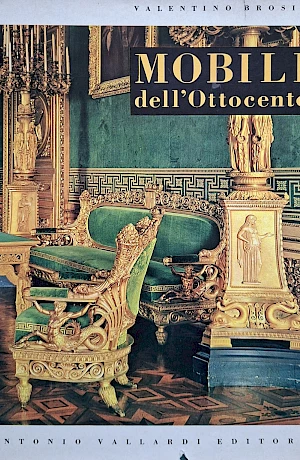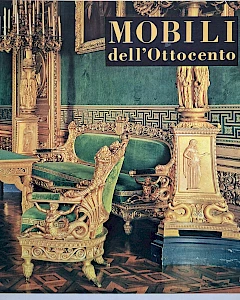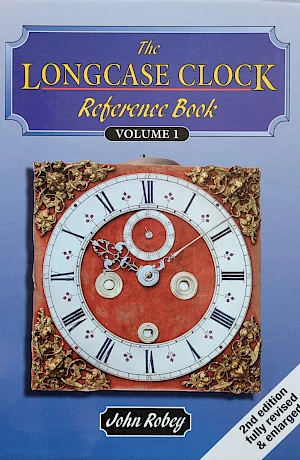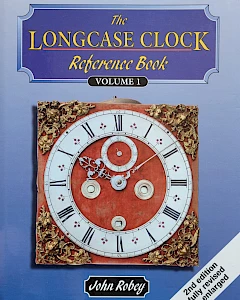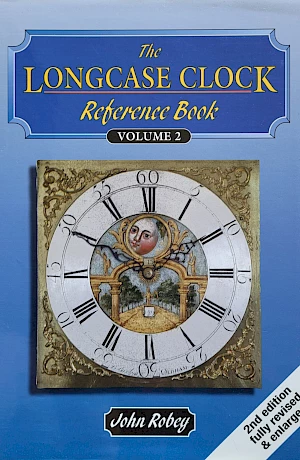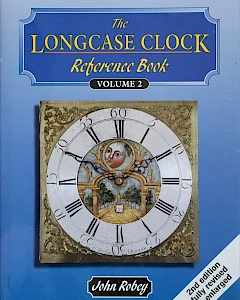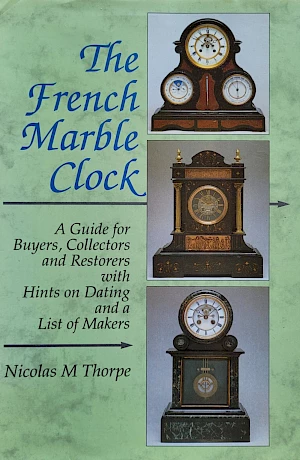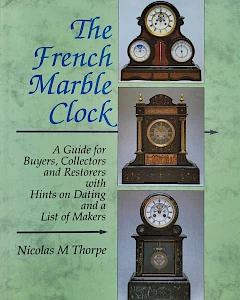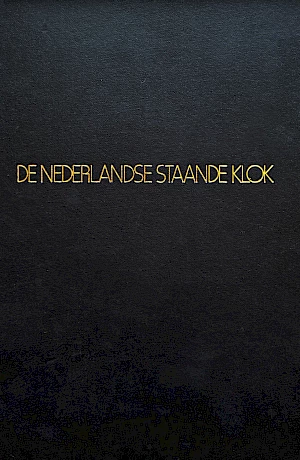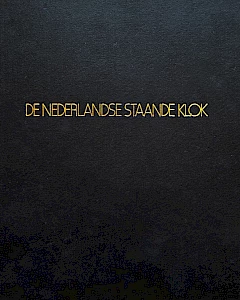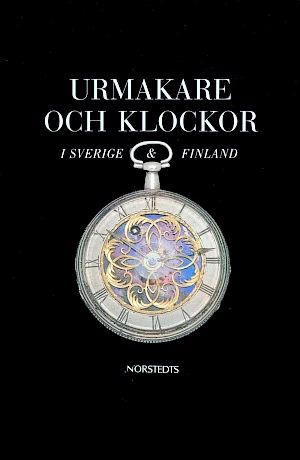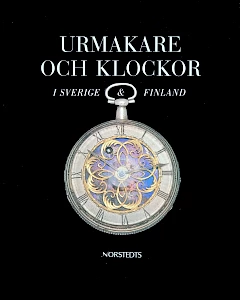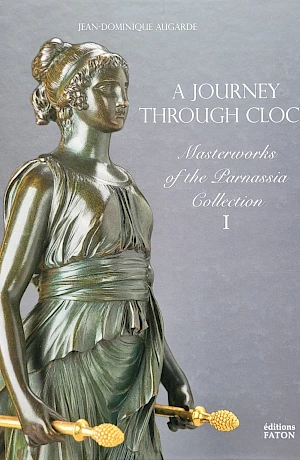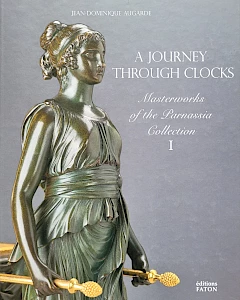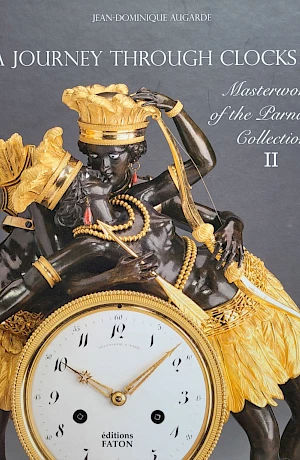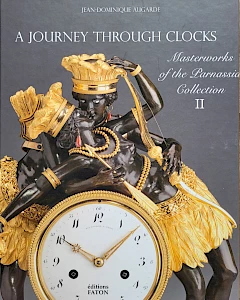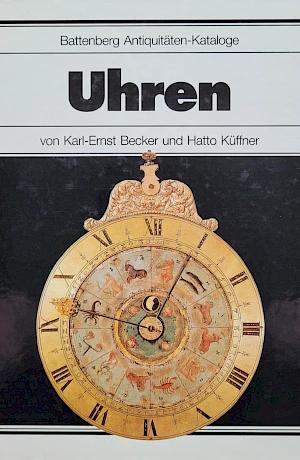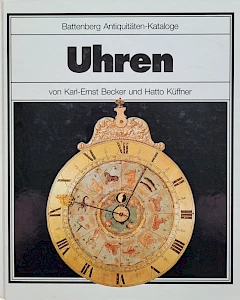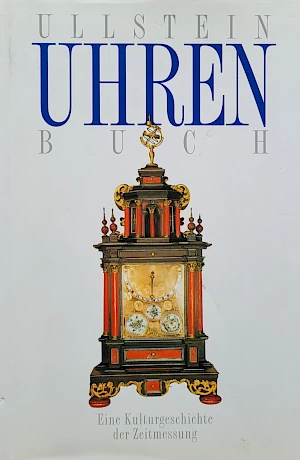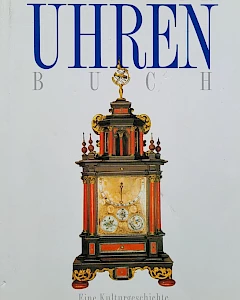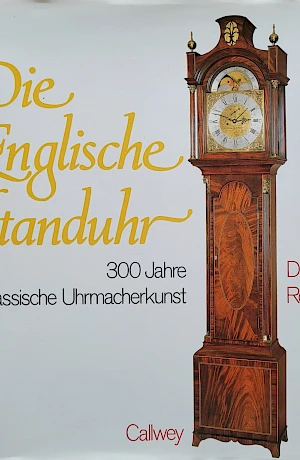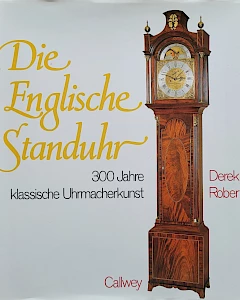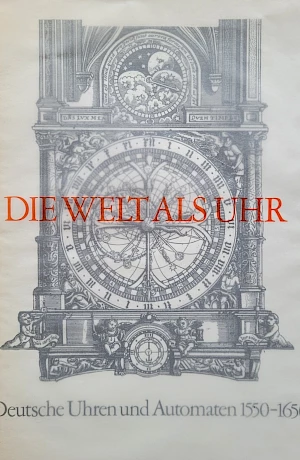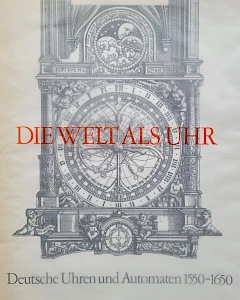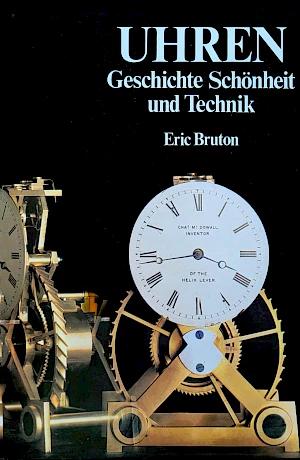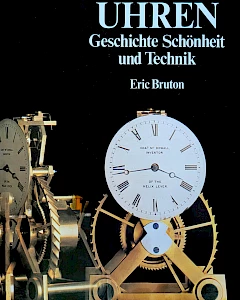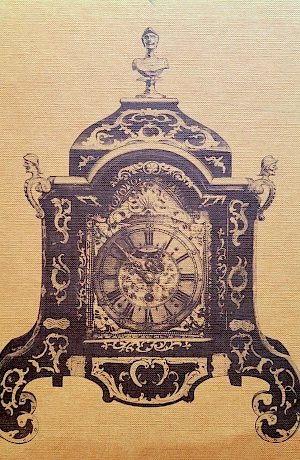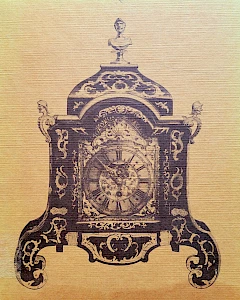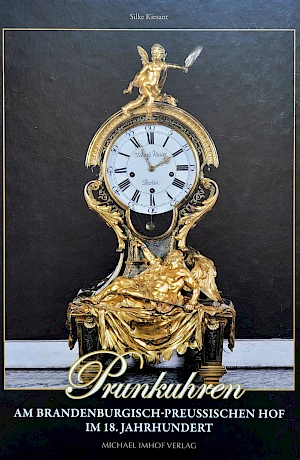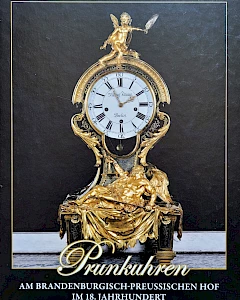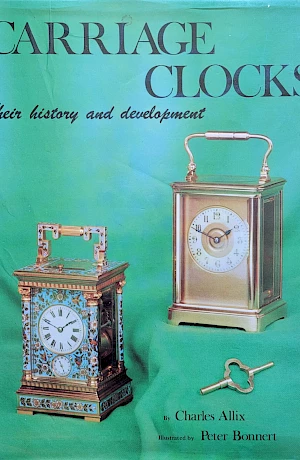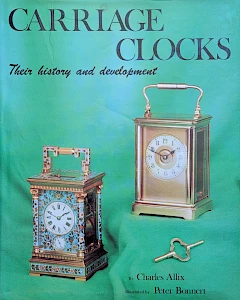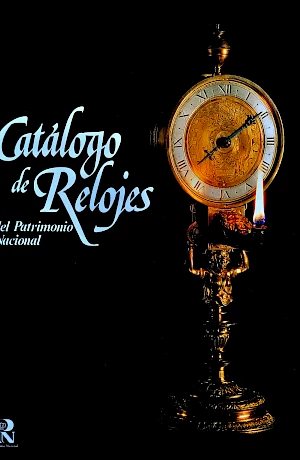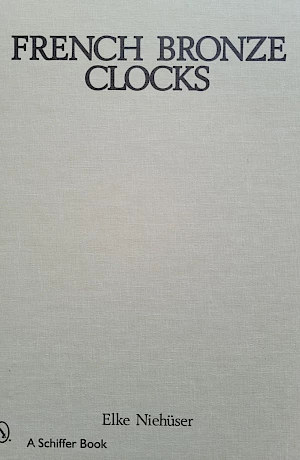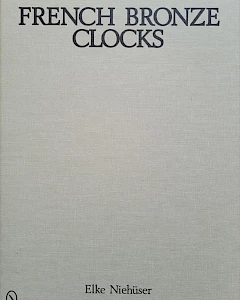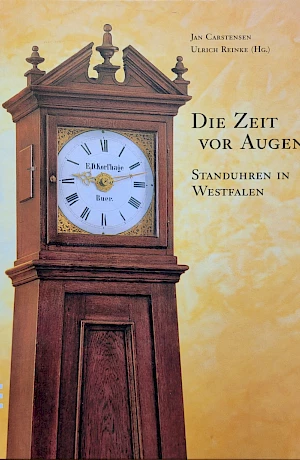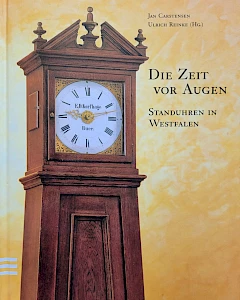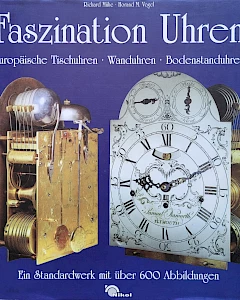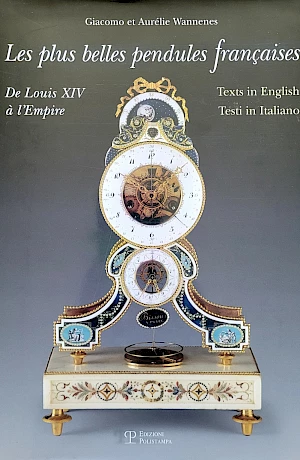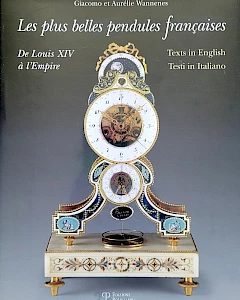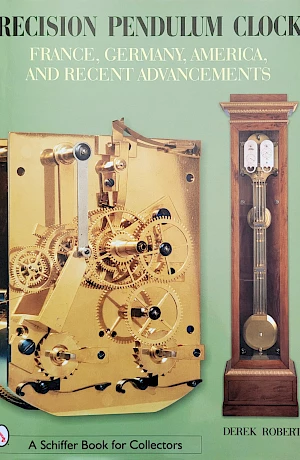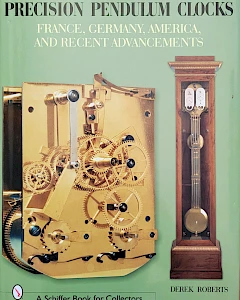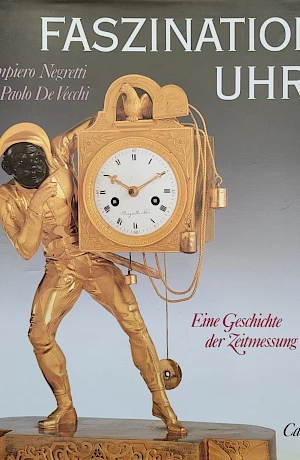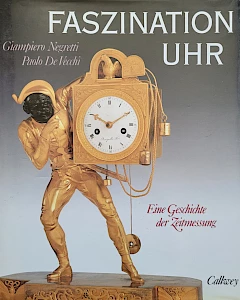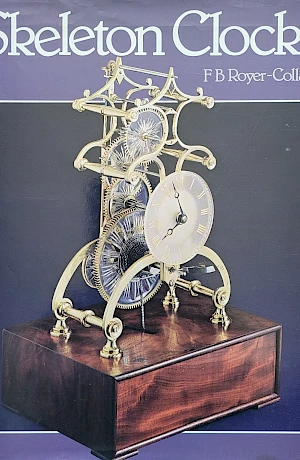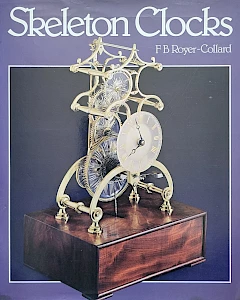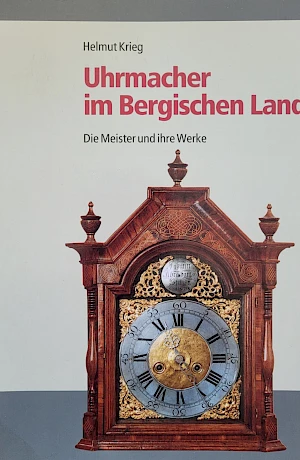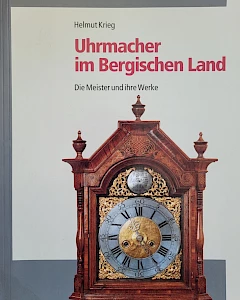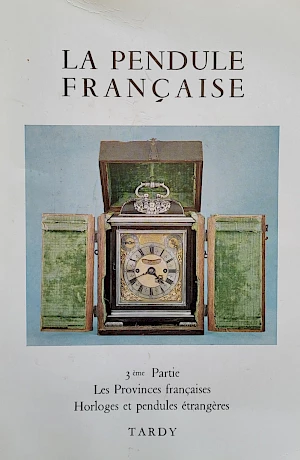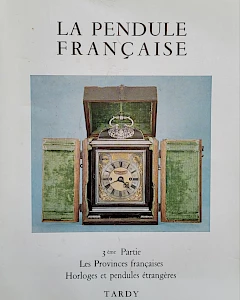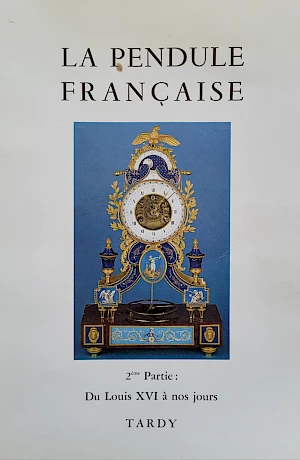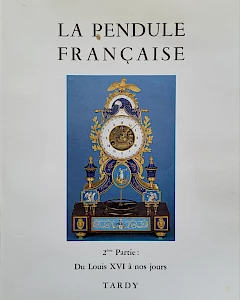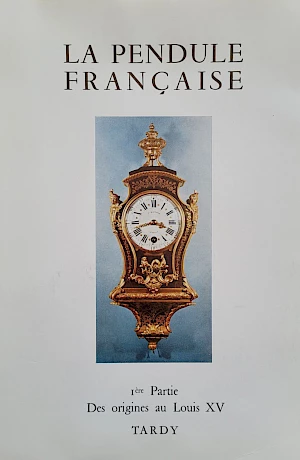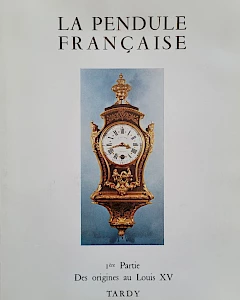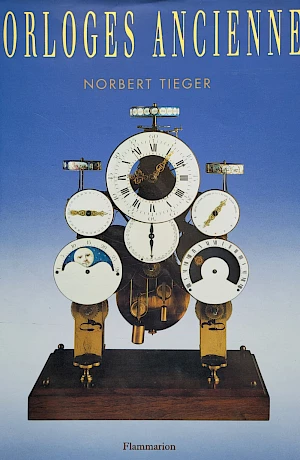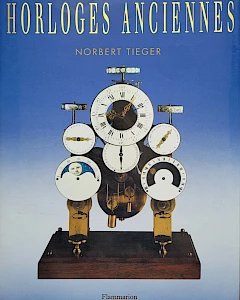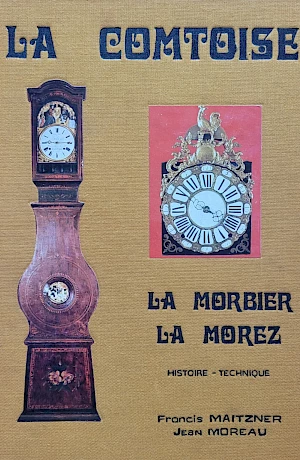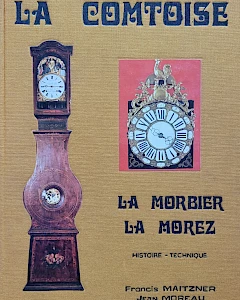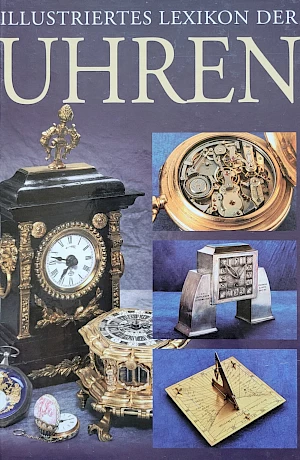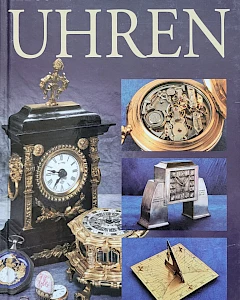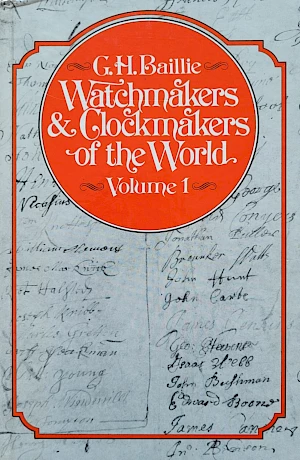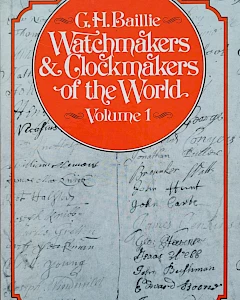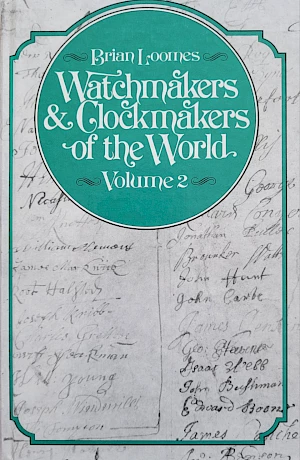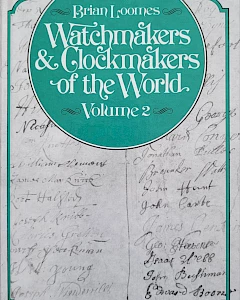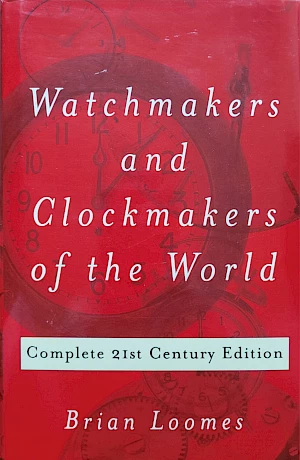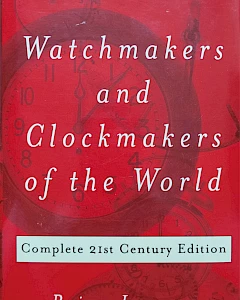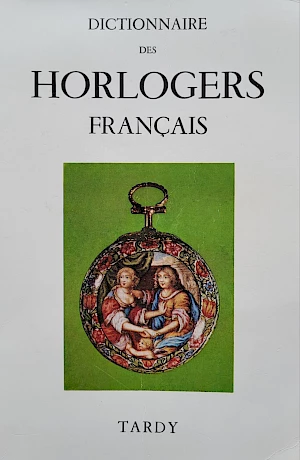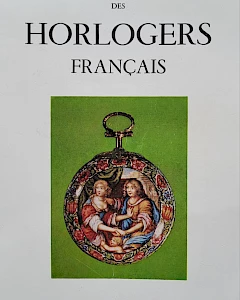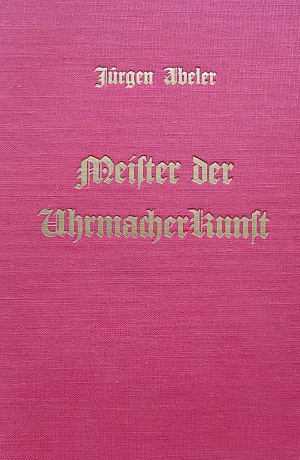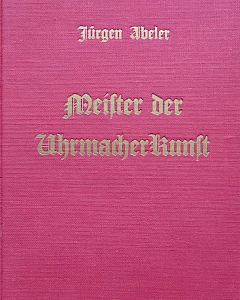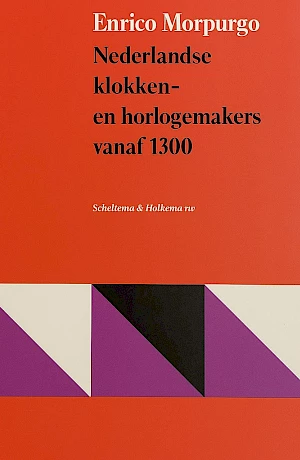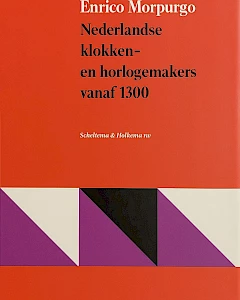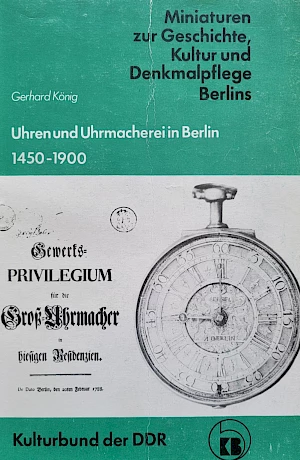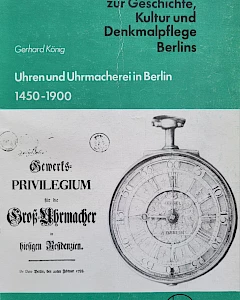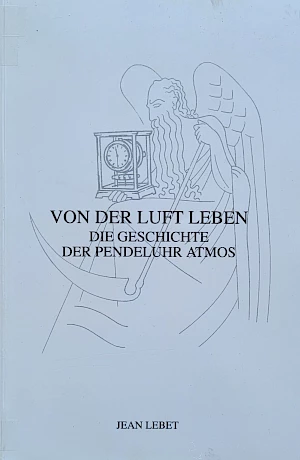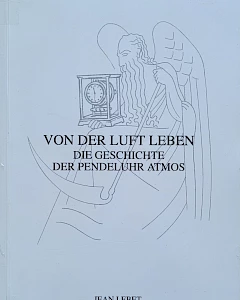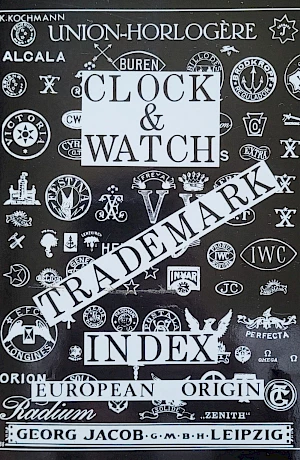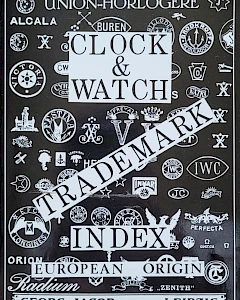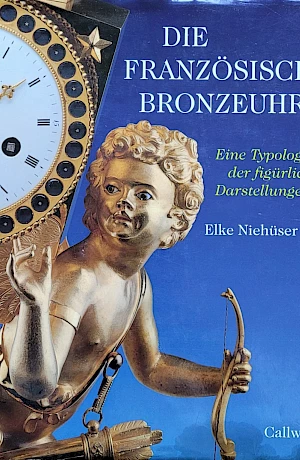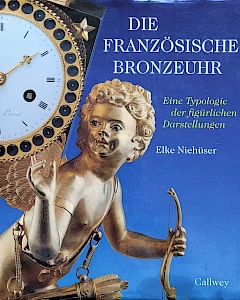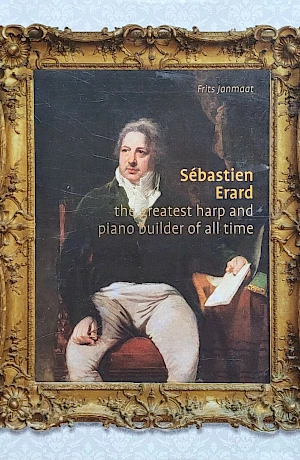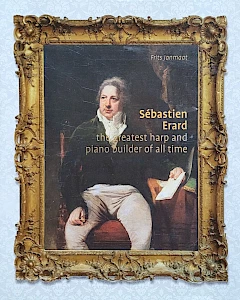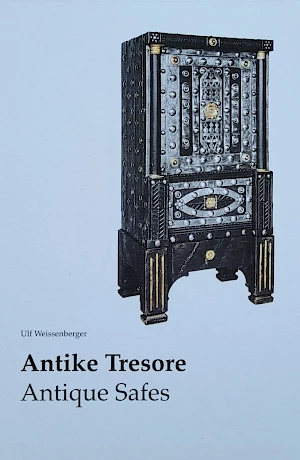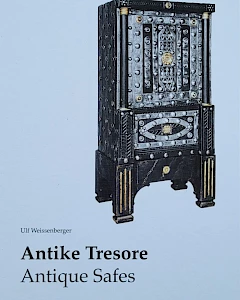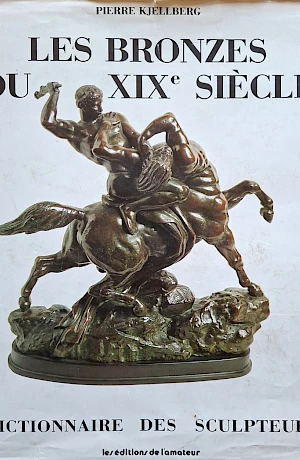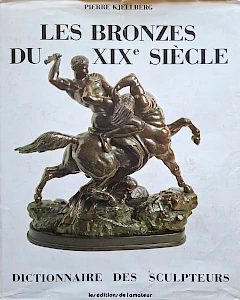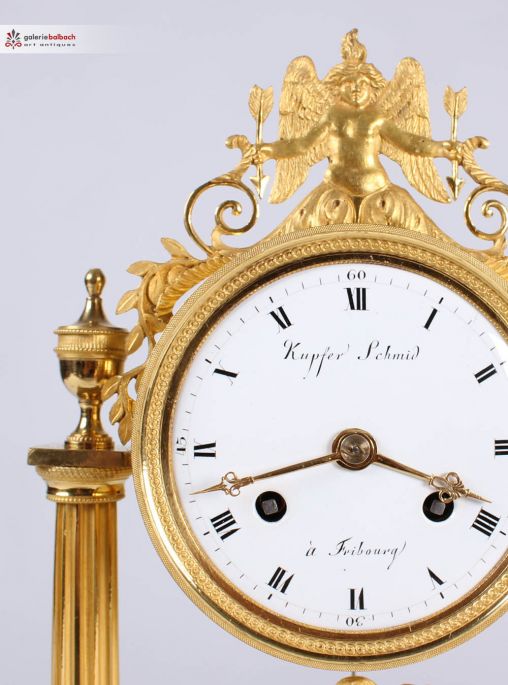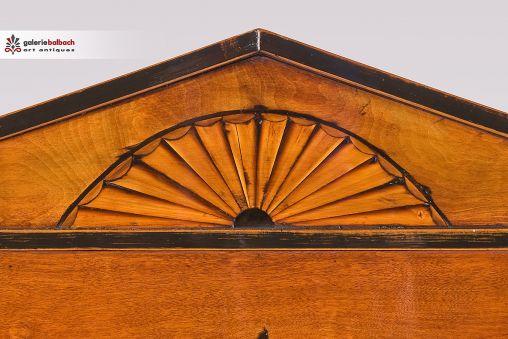Bibliography
The theme world of antique furniture and clocks is huge. I will probably always learn something new and still never know everything. And that is why I am so glad that there are experts and scholars who share their great expertise in their respective special fields with me and with all of us... in books!
Researching with reference books
I use books for all my research. My collection of literature on the subject of 18th and 19th century furniture and clocks comprises about 300 reference books.
During my traineeship at an auction house, working with scholarly literature was part of my daily routine—and it's something that continues to benefit me to this day. It was then that I learned how to conduct focused research and which books to consult for which objects.
Looking up literature references, which you'll find for most of the pieces in my collection, still brings me great joy. And even though I now know exactly where to look, the search often takes much longer than necessary—because once I open a book, I rarely close it again right away...
Among others, I work with the following books:
Reference books antique furniture
Annigje Hofstede - Nederlandse Meubelen 1700-1830
Very clear work with 440 well-matched photos. Written in Dutch, it covers furniture from the
[more...]Badisches Landesmuseum Karlsruhe - Möbel für den Fürstenhof
Reference book on courtly furniture, especially from Baden-Württemberg. In the book we find
[more...]Christian Schatt - Barock- und Rokoko-Möbel
Good reference work on furniture from 17th and 18th century town houses and manor houses. The
[more...]Dietrich Fabian - Abraham und David Roentgen - Von der Schreinerwerkstatt zur Kunstmöbel-Manufaktur
Reference book on the most interesting pieces of furniture from the Neuwied art furniture
[more...]Gloria Ehret - Deutsche Möbel des 18. Jahrhunderts
Reference work on German Baroque, Rococo and Classicist furniture. Sorted by regions of origin
[more...]John Morley - Möbel Europas
2500 years of European furniture art. From antiquity to modernity. This book is rather
[more...]Pressler / Straub - Biedermeier-Möbel
Antiques catalogue, well sorted by furniture types. Mainly black and white photos. ISBN:
[more...]Rainer Haaff - Biedermeier-Möbel - Deutschland und Donaumonarchie
Very clear reference work for Biedermeier furniture from Germany and the Danube Monarchy. Well
[more...]Rainer Haaff - Biedermeierwelten Aufl. 2009
The reference book "Biedermeier Worlds" by Rainer Haaff is a very good reference work for German
[more...]Rainer Haaff - Eichenmöbel
Well-assorted reference book with oak furniture from Baroque to Art Nouveau. The book deals
[more...]Rainer Haaff - Gründerzeit und Jugendstil
The standard work on furniture and home decor in the German Empire on 656 pages. A total of 2700
[more...]Rainer Haaff - Louis-Philippe Möbel
Well sorted reference book on Louis-Philippe / second rococo furniture. In German and English
[more...]Rainer Haaff - Prachtvolle Stilmöbel
The many different styles of historicism have been organised into meaningful chapters in this
[more...]Rainer Haaff - Weichholz-Möbel
The standard work for German antique softwood furniture from Baroque, Louis XVI and Biedermeier
[more...]Renate Möller - Empire- und Biedermeiermöbel
Recommended beginner's book with good photos, detailed descriptions and a lot of interesting
[more...]Renate Möller - Möbel vom Barock bis zur Gegenwart
Clear beginner's antiquarian book with good pictures, detailed descriptions and interesting
[more...]Sotheby's großer Antiquitäten-Führer - Möbel
Published by Orbis Verlag, edited by experts from the oldest and most famous auction house for
[more...]Stefan Baumeier - Feine Möbel aus Westfalen
This reference book deals with the work of Philipp Ferdinand Ludwig Bartscher, probably the
[more...]Esla Colsman - Möbel Gotik bis Jugendstil
Furniture catalogue of the collection of the Museum für Angewandte Kunst in Cologne. 542 pages,
[more...]Gisela Haase - Dresdner Möbel des 18. Jahrhunderts
Important reference work on the great furniture and cabinetmaking art of Dresden in the 18th
[more...]Wolfgang Eller - Biedermeier-Möbel
Important reference work on Biedermeier domestic culture. Very clearly arranged catalogue with
[more...]Wolfgang Eller - Möbel des Klassizismus
Comprehensive overview of furniture making in German-speaking countries from 1770-1830. Ideal
[more...]Wolfgang L. Eller - Schreibmöbel 1700-1850
Anyone who has a classicist or baroque secretary at home and would like to find out more about
[more...]Wolfgang Schwarze - Antike deutsche Möbel von 1700-1840
Comprehensive reference work for Baroque and Classicist furniture with around 700 (black and
[more...]Württembergisches Landesmuseum - Barockmöbel aus Württemberg und Hohenlohe 1700–1750
Ein unverzichtbares Werk zur südwestdeutschen Möbelkunst im 18. Jahrhundert, das sich
[more...]Uwe Dobler - Barock-Möbel
A practice-orientated reference work on bourgeois furniture art of the 18th century with a focus
[more...]Hojer / Ottomeyer - Die Möbel der Residenz München II - Die deutschen Möbel des 16.-18. Jahrhunderts
The Munich Residence is home to a unique collection of historical furniture. In this second book
[more...]Heinrich Kreisel - Die Kunst des deutschen Möbels - Spätbarock und Rokoko
Probably the most important standard work on German Baroque and Rococo furniture of the 18th
[more...]Brigitte Langer - Die Möbel der Schlösser Nymphenburg und Schleißheim
The historically grown furniture collection of the Nymphenburg and Schleißheim summer
[more...]Christoph Graf von Pfeil - Die Möbel der Residenz Ansbach
The residential palace of the Margraves of Brandenburg-Ansbach with its complete collection of
[more...]Fritz Arens - Meisterrisse und Möbel der Mainzer Schreiner
This publication is the first to comprehensively document the furniture inventory and the
[more...]Hojer / Ottomeyer - Residenz München I - Die französischen Möbel des 18. Jahrhunderts
Catalogue volume on French furniture art of the 18th century in the Munich Residence. With
[more...]Büttner / Weber-Woelk - David Roentgen - Möbelkunst und Marketing im 18. Jahrhundert
Academic volume accompanying the exhibition on the 200th anniversary of David Roentgen's death.
[more...]Brigitte Langer - Pracht und Zeremoniell - Die Möbel der Residenz München
This richly illustrated catalogue sheds light on the ceremonial context of courtly furniture and
[more...]Cornet / Willscheid - Möbel à la Roentgen
The catalogue for the exhibition Möbel à la Roentgen sheds light on the artistic and
[more...]Stefan Semler - Johann Adam Sauer - Schreinermeister und Ebenist in Fulda
Accompanying publication on the 250th birthday of the Fulda furniture maker Johann Adam Sauer
[more...]Ingolf Bauer - Möbel aus Franken
The book comprises 405 pages of richly illustrated texts on the history and design of Franconian
[more...]Hans Krielke - Bergische Möbel
The book Bergische Möbel by H. H. Krielke offers a comprehensive cultural and
[more...]Möbel in Schleswig-Holstein - Katalog des Städtischen Museums Flensburg
The richly illustrated catalogue documents the Flensburg Museum's cultural-historical furniture
[more...]Wolfgang Wiese - Die Zeichenmappe des Ebenisten Johannes Klinckerfuss (1770-1831)
The surviving portfolio of drawings by the Stuttgart ebenist Johannes Klinkerfuß (1770-1831) is
[more...]Sulzbacher / Atzig - Friedrich Gottlob Hoffmann
[more...]Vornehmste Tischlerarbeiten aus Leipzig. F. G. Hoffmann – Hoftischler und Unternehmer
This publication documents the life, work and workshop practice of Friedrich Gottlob Hoffmann
[more...]Thomas M. Dann - Das ländliche Möbel in Lippe
In this book, Thomas M. Dann offers a well-founded cultural-historical analysis of rural
[more...]Gert Nagel - Möbel
The book contains over 500 black and white illustrations and brief descriptions of the objects
[more...]Erich Klatt - Die Konstruktion alter Möbel
This standard work on furniture studies contains numerous true-to-scale technical drawings and
[more...]Gelfer-Jørgensen - The Dream of a Golden Age - Danish Neo-Classical Furniture 1790–1850
This extensively illustrated work illuminates the entire spectrum of Danish neoclassical
[more...]Möbel - Eine Stilgeschichte durch vier Jahrtausende
This monumental survey work covers the development of furniture art from antiquity to modern
[more...]Torsten Sylvén - Mästarnas Möbler - Stockholmsarbeten 1700–1850
Based on decades of research, the book analyses stylistic elements, decorative forms and
[more...]Lucien Zinutti - Il Linguaggio Del Mobile Antico
This reference book is dedicated to the stylistic and typological analysis of Italian furniture
[more...]Europäische Möbelkunst - Italien 16.–18. Jahrhundert
This richly illustrated volume deals with regional styles in Tuscany, northern Italy, Veneto,
[more...]Möbel - Vom 18. Jahrhundert bis Art Déco
This reference work offers a comprehensive overview of three centuries of European furniture
[more...]Biedermeier - Die Erfindung der Einfachheit
The comprehensive exhibition catalogue Biedermeier. The Invention of Simplicity
[more...]Georg Himmelheber - Biedermeiermöbel
Georg Himmelheber's standard work on Biedermeier furniture art offers a comprehensive analysis
[more...]Hojer / Ottomeyer - Die Möbel der Residenz München - Empire Biedermeier und Spätklassizismus
The third volume of the inventory catalogue The Furniture of the Munich Residence
[more...]Hans Ottomeyer - Zopf- und Biedermeiermöbel
This collection catalogue documents the Munich City Museum's important holdings of furniture
[more...]Katrin Heise - Sächsische und thüringische Biedermeiersekretäre
Katrin Heise's study is dedicated to the master's examination drawings of Biedermeier
[more...]Jörn Bahns - Biedermeier-Möbel - Entstehung – Zentren – Typen
This compact handbook offers a well-founded introduction to the development, regional diversity
[more...]Ottomeyer / Schlapka - Biedermeier - Interieurs und Möbel
This compendium provides a generally understandable overview of the home decor and furniture art
[more...]Heidrun Zinnkann - Mainzer Möbelschreiner der ersten Hälfte des 19. Jahrhunderts
The work systematically documents the achievements and structures of the Mainz cabinetmakers of
[more...]Christiani - Schreibmöbelentwürfe zu Meisterstücken Braunschweiger Tischler aus der 1. Hälfte des 19. Jahrhunderts
The large number of original masterpieces and their juxtaposition with surviving pieces of
[more...]Heidrun Zinnkann - Biedermeiermöbel Europas 1815–1835
This richly illustrated catalogue volume by Heidrun Zinnkann sheds light on the stylistic
[more...]Angus Wilkie - Biedermeier - Eleganz und Anmut einer neuen Wohnkultur am Anfang des 19. Jahrhunderts
A solid introduction to the Biedermeier period, with a focus on home decor, furniture and social
[more...]Kreisel / Himmelheber - Die Kunst des deutschen Möbels - Band III - Klassizismus - Historismus - Jugendstil
The work is the third volume of the standard work on German furniture art and deals with the
[more...]Biedermeiers Glück und Ende - Die gestörte Idylle 1815–1848
The 750-page publication provides a good basis for analysing the Biedermeier period, and not
[more...]Rainer Haaff - BiedermeierWelten - Deutschland & Donaumonarchie - Neuauflage 2024
Excellent reference work for all Biedermeier furniture. Simple, clear lines, reduced
[more...]Gloria Ehret / John Andrews- Englische Möbel
A clear reference book with numerous illustrations that facilitate the dating and regional
[more...]John Bly - English Furniture
A beginner-friendly guide to English furniture with an art-historical
[more...]Alvar Gonzales-Palacios - Europäische Möbelkunst - England 19. Jahrhundert
This richly illustrated work offers a compact presentation of English furniture art from the
[more...]Denise Ledoux-Lebard - Le mobilier français du XIXe siècle - Dictionnaire des ébénistes et menuisiers
The book is an indispensable reference work for provenance research on 19th century French
[more...]Yves Carlier - Le Style Louis XV
The work deals with sculptors as well as porcelain and bronze artists and illuminates the
[more...]Pallot / Sainte Fare Garnot - Le mobilier français du musée Jacquemart-André
This volume offers an overview of French furniture from the Louis XIV, Régence, Louis XV and
[more...]Claude-Paule Wiegandt - Le Mobilier Français - Régence – Louis XV
This book documents the transition from the Régence style to the Louis XV style in French
[more...]Claude-Paule Wiegandt - Le Mobilier Français - Transition – Louis XVI
This book documents the transitional phase from the Louis XV to the Louis XVI style in French
[more...]Molesworth / Kenworthy-Browne - Meubles d’Art
Specialised book in French with a particular focus on 18th and 19th century
[more...]Gérard Mabille - Menuiserie – Ébénisterie - Arts et Techniques
An interesting book for anyone interested in the technical components of historical furniture in
[more...]Pierre Kjellberg - Le Mobilier Français Du XVIIIe Siècle - Dictionnaire des Ébénistes et des Menuisiers
[more...]Janine Léris-Laffargue - Le Mobilier Français - Restauration – Louis-Philippe
Vividly designed volume on French furniture art of the first half of the 19th
[more...]Odile Nouvel-Kammerer - Napoléon III – Années 1880
An attractively illustrated overview of French furniture from the second half of the 19th
[more...]Marie-Noëlle de Grandry - Le Mobilier Français - Directoire – Consulat – Empire
A well-founded work on French furniture from the period after the Revolution to the
[more...]Enrico Colle - Il mobile Impero in Italia
A comprehensive overview of furniture art and interior design in Italy during the Empire
[more...]Françoise Lévy-Coblentz - L’art du meuble en Alsace au siècle des Lumières
A fundamental work on Alsatian furniture art of the 18th
[more...]Helmut Flade - Intarsia - Europäische Einlegekunst aus sechs Jahrhunderten
This volume documents the history of marquetry art in Europe with a focus on 18th century
[more...]Ulrich Leben - Molitor - Ébéniste de Louis XVI à Louis XVIII
The first and still authoritative monograph on Bernard Molitor (1755-1833), one of the last
[more...]Pierre and Françoise Rouge - Le génie des Hache
This comprehensive monograph honours the life's work of the famous Hache family of furniture
[more...]Christopher Payne - Stilmöbel Europas
A large-format, richly illustrated catalogue on the European furniture art of historicism in the
[more...]Antoine Chenevière - Russian Furniture - The Golden Age 1780–1840
Comprehensive monograph on Russian furniture art in the late 18th and early 19th
[more...]Lagerquist - Rokokomöbler - Signerade av ebenister och schatullmakare i Stockholm
Lagerquist examines Rococo furniture production in Stockholm between 1740 and 1780, presents
[more...]Torsten Sylvén - Stolens guldålder - Stolar och stolmakare i Sverige 1650–1850
Torsten Sylvén's work Stolens guldålder ("The Golden Age of the Chair") is dedicated
[more...]Lars Ljungström - Georg Haupt - Gustav IIIs hovschatullmakare
Comprehensive exhibition catalogue on the work of the court cabinetmaker Georg Haupt (1741-1784)
[more...]Asenbaum - Witt-Dörring - Moderne Vergangenheit 1800–1900 - Möbel-Metall-Keramik-Glas-Textil - Entwürfe aus Wien
This catalogue compares modern Viennese designs from around 1900 with their historical
[more...]Achim Stiegel - Berliner Möbelkunst vom Ende des 18. bis zur Mitte des 19. Jahrhunderts
Achim Stiegel examines Berlin's development into a leading centre of furniture production and
[more...]Patrizia Rosazza Ferraris - Il Museo Mario Praz
Presentation of the creation and furnishing of the Museo Mario Praz in Rome, which preserves the
[more...]Enrico Colle - I mobili di Palazzo Pitti 1737–1799
This volume documents the furniture of the Palazzo Pitti from the first Lorraine period between
[more...]Enrico Colle - I mobili di Palazzo Pitti 1800–1846
This volume is part of the five-volume series I Mobili di Palazzo Pitti, which
[more...]Skira Editore - Biedermeier - Arte e cultura nella Mitteleuropa 1815–1848
The exhibition catalogue offers a comprehensive overview of the art and cultural production of
[more...]Giocomo Wannenes - Mobili d’Italia - L’Ottocento
The author compares the Italian furniture art of the 19th century with the style models from
[more...]Valentino Brosio - Mobili italiani dell’Ottocento
The book shows how diverse and qualitatively different the Italian furniture production of the
[more...]Reference books antique clocks
John Robey - The Longcase Clock Reference Book. Volume 1
The book offers over 2,500 illustrations in two volumes on the subject of grandfather clocks and
[more...]John Robey - The Longcase Clock Reference Book. Volume 2
The second volume of this comprehensive standard work on the subject of antique grandfather
[more...]Nicolas Thorpe - The French Marble Clock
A practice-orientated handbook on the subject of French marble and slate clocks, especially from
[more...]Jan Zeeman - De Nederlandse Staande Klok
A fundamental standard work on the Dutch grandfather clock of the 18th
[more...]Gunnar Pipping - Urmakare och Klockor i Sverige och Finland
This fundamental reference work lists more than 7,000 Swedish and Finnish watchmakers and is
[more...]Jean-Dominique Augarde - A Journey Through Clocks. Masterworks of the Parnassia Collection, Volume I
Very descriptive reference book on the subject of figurative bronze pendulums of the late 18th
[more...]Jean-Dominique Augarde - A Journey Through Clocks. Masterworks of the Parnassia Collection. Volume 2
The second volume of A Journey Through Clocks is dedicated to the so-called "Pendules
[more...]Becker / Küffner - Uhren
A wide-ranging reference book on the subject of antique clocks. For a long time, it was a
[more...]Jürgen Abeler - Ullstein-Uhrenbuch
Illustrated overview of antique clocks of all types and from all
[more...]Derek Roberts - Die englische Standuhr
In-depth presentation of the development of English floor clocks, focussing on the 18th and 19th
[more...]Himmelheber - Die Welt als Uhr - Deutsche Uhren und Automaten 1550-1650
Comprehensive cultural-historical classification of astronomical clocks, celestial globes,
[more...]Eric Bruton - Uhren - Geschichte - Schönheit und Technik
An illustrative work on the history and technology of clocks in Europe, focussing on the 18th
[more...]Heuer / Maurice - Europäische Pendeluhren - Dekorative Instrumente der Zeitmessung
The book is regarded as the standard German-language work on the subject of pendulums and floor
[more...]Silke Kiesant - Prunkuhren am brandenburgisch-preußischen Hof im 18. Jahrhundert
Examination of the role and function of magnificent clocks in the palaces of the Hohenzollern
[more...]Charles Allix - Carriage Clocks – Their History and Development
Standard work on the history and development of the Pendule d'Officier or Carriage Clock in
[more...]Editorial Patrimonio Nacional - Catálogo de Relojes del Patrimonio Nacional
Comprehensive catalogue of the 18th and 19th century table clocks and mantel clocks owned by the
[more...]Elke Niehüser - French Bronze Clocks - 1700–1830
Well-founded study of French bronze pendulum clocks from the period from Louis XV to the Empire.
[more...]Carstensen - Reinke - Die Zeit vor Augen - Standuhren in Westfalen
The most important specialised book on the subject of the Westphalian longcase clock in the 18th
[more...]Mühe - Vogel - Faszination Uhren - Europäische Tischuhren – Wanduhren – Bodenstanduhren
Comprehensive work on the art of European clockmaking, focussing on table clocks, wall clocks
[more...]Wannenes - Les plus belles pendules françaises - De Louis XIV à l’Empire
Well-illustrated reference book on the French pendulum from the 17th to the early 19th
[more...]Derek Roberts - Precision Pendulum Clocks
Comprehensive work on precision clocks from England, France, Germany and the USA with a focus on
[more...]Negretti - De Vecchi - Faszination Uhr - Eine Geschichte der Zeitmessung
Illustrated cultural history of timekeeping from the earliest water clocks of Ancient Egypt to
[more...]Royer-Collard - Skeleton Clocks
The book is regarded as a standard work that deals exclusively with skeleton clocks. It
[more...]Helmut Krieg - Uhrmacher im Bergischen Land – Die Meister und ihre Werke
Interesting book on the subject of the "Bergische grandfather clock" of the 18th and 19th
[more...]Tardy - La Pendule Française - 3ème Partie - Les Provinces françaises – Horloges et pendules étrangères
This book is the third part of a three-volume series on the art of French
[more...]Tardy - La Pendule Française - 2ème Partie - Du Louis XVI à nos jours
This book is the second part of a three-volume series on the art of French
[more...]Tardy - La Pendule Française - 1ère Partie - Des origines au Louis XV
This book is the first part of a three-volume series on the art of French
[more...]Norbert Tieger - Horloges anciennes
On display are primarily clocks from the 18th century; wall clocks, grandfather clocks, mantel
[more...]Maitzner - Moreau - La Comtoise – La Morbier – La Morez - Histoire – Technique
Important standard work on the Comtoise clock with a comprehensive historical account from the
[more...]Illustriertes Lexikon der Uhren
The work offers a comprehensive overview of the development of timepieces from the earliest
[more...]Baillie - Watchmakers & Clockmakers of the World - Volume 1
This comprehensive reference work lists over 36,000 watchmakers from all over the world. Mainly
[more...]Loomes - Watchmakers & Clockmakers of the World - Volume 2
Supplementary volume to G. H. Baillie's first part, with over 35,000 entries on watchmakers
[more...]Brian Loomes - Watchmakers and Clockmakers of the World - Complete 21st Century Edition
The directory now includes around 90,000 clockmakers, dealers and manufacturers of scientific
[more...]Tardy - Dictionnaire des Horlogers Français
With around 23,000 entries, this is the most comprehensive directory of French
[more...]Jürgen Abeler - Meister der Uhrmacherkunst
The directory contains over 14,000 names and brands of watchmakers and manufacturers of
[more...]Enrico Morpurgo - Nederlandse klokken- en horlogemakers vanaf 1300
The most important directory of Dutch watchmakers with names, locations and dates of birth and
[more...]Gerhard König - Uhren und Uhrmacherei in Berlin 1450–1900
Berlin clockmakers gained not only regional but also national significance. They are recorded
[more...]Jean Lebet - Living on Air - The history of the Atmos pendulum clock
The book offers a comprehensive overview of the history and technology of the Atmos clock from
[more...]Karl Kochmann - Clock and Watch Trademark Index
This reference work systematically documents the trade marks and company stamps of clock
[more...]Elke Niehüser - Die französische Bronzeuhr - Eine Typologie der figürlichen Darstellungen
A study of French bronze clocks with figurative depictions of gods, heroes, everyday scenes and
[more...]Reference books on other antiques
Frits Janmaat - Sébastien Erard - The Greatest Harp and Piano Builder of All Time
Frits Janmaat's work traces the life and achievements of Sébastien Erard, one of the most
[more...]Ulf Weissenberger - Antike Tresore - Antique Safes
Important bilingual standard work on the history and development of safes from antiquity to the
[more...]Pierre Kjellberg - Les Bronzes du XIXe Siècle
Standard work on French bronze sculpture of the 19th century with a detailed catalogue of
[more...]The short descriptions of the books listed are mostly taken from the tables of contents or blurb texts and are the intellectual property of the respective authors and publishers.
